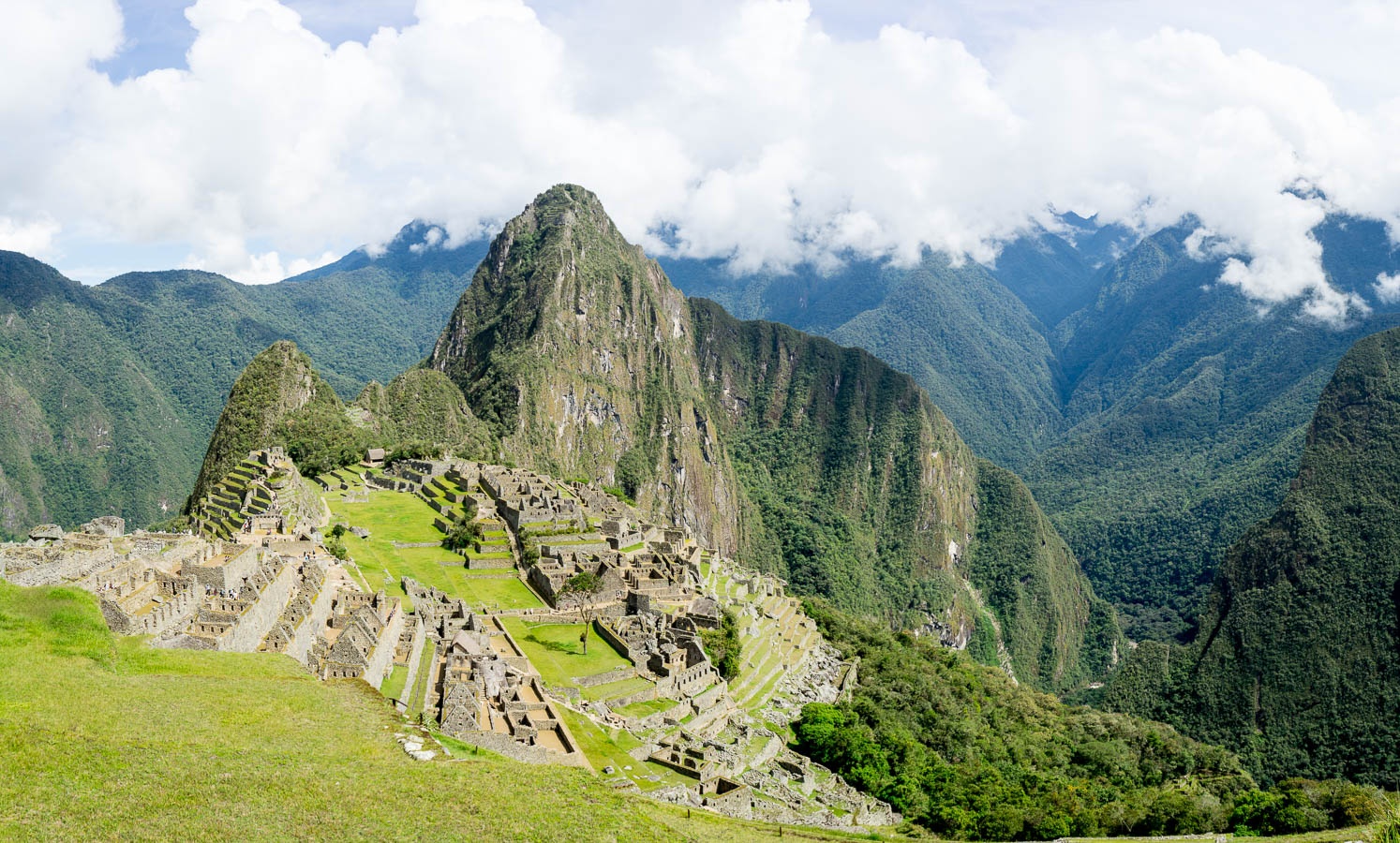
Hiking the Inca Trail to Machu Picchu
This is a post some twenty years in the making. So many of us, I think, have seen a photo of Machu Picchu and thought, “Wow! I wanna go there.” I know I did, and for a couple of decades I let that sit on my bucket list. Well this December I finally went there - and after so many years of building great expectations, the journey exceeded them. Let me tell you about it.
Day 1: Into the Wild
Planning this trip, I felt that surely Machu Picchu shall be the highlight, but that it would be even grander to hike to it, to set the mood and tone and anticipation. So that’s what Stephanie and I did - a four day trek on the ancient Inca Trail, reaching Machu Picchu on the morning of the fourth day.
We set off from Cusco around 5am, caught up on sleep on the bus, and after a quick breakfast set off upstream, following the Urubamba River from around Tanca.
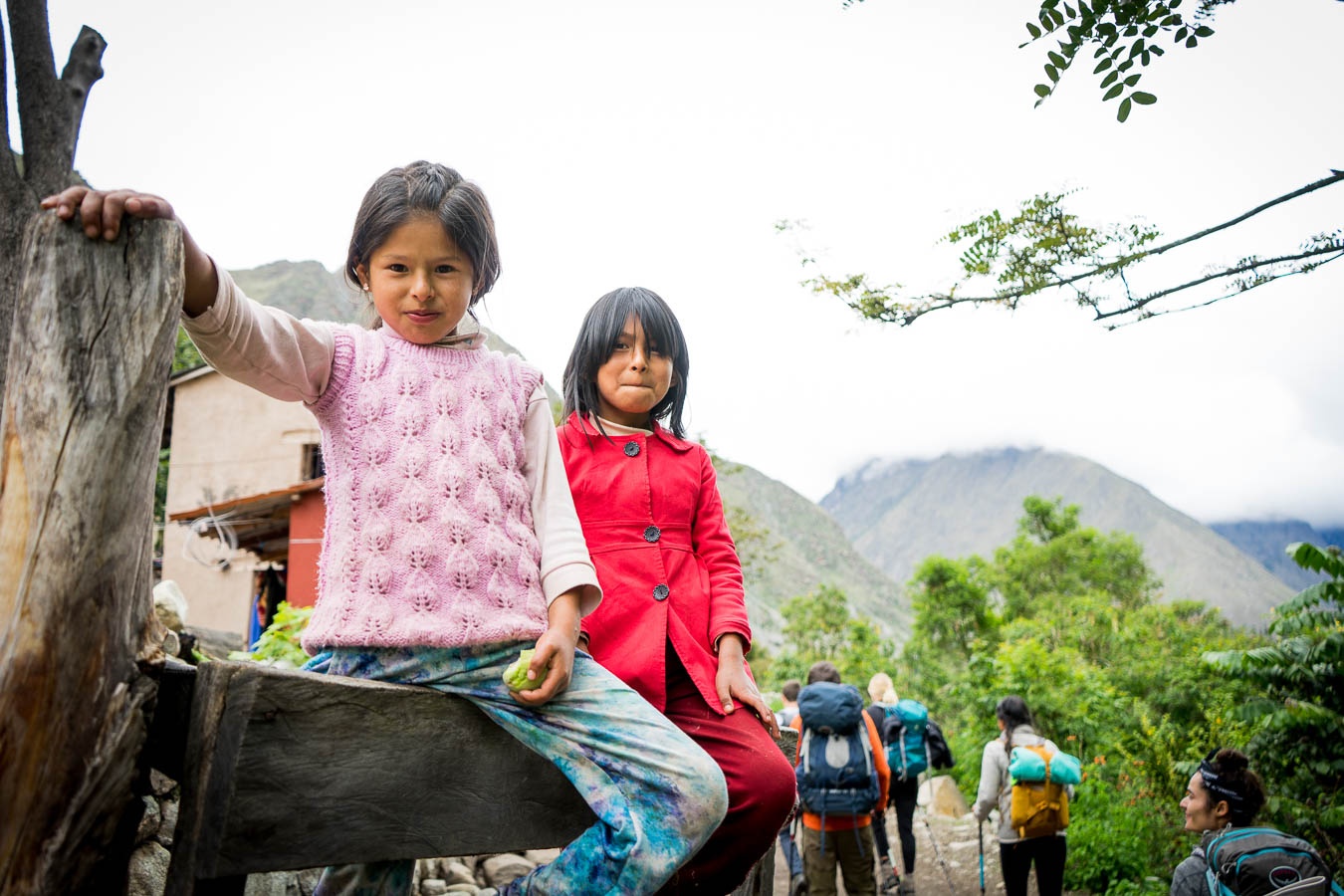
This first part of the trail goes through small villages. There are no roads here; locals transport stuff mostly on horses and motorcycles, and are always happy to offer the weary hiker refreshment or bathroom use.
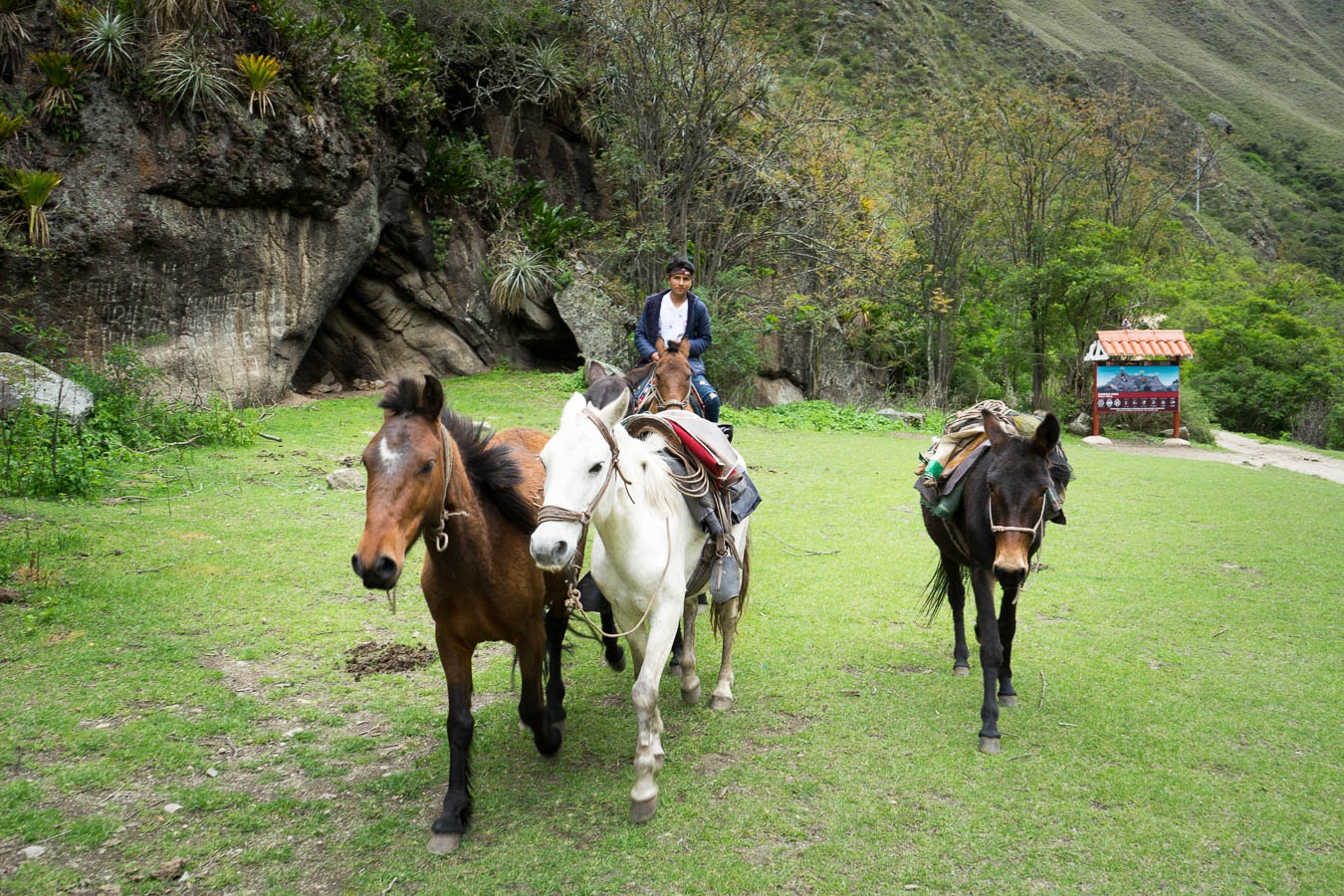
Most of the way up to Dead Woman’s Pass, we’d see dogs walking on the trail - sometimes with people, but often alone. They were domesticated and well-fed, just making their merry way from outpost to another.
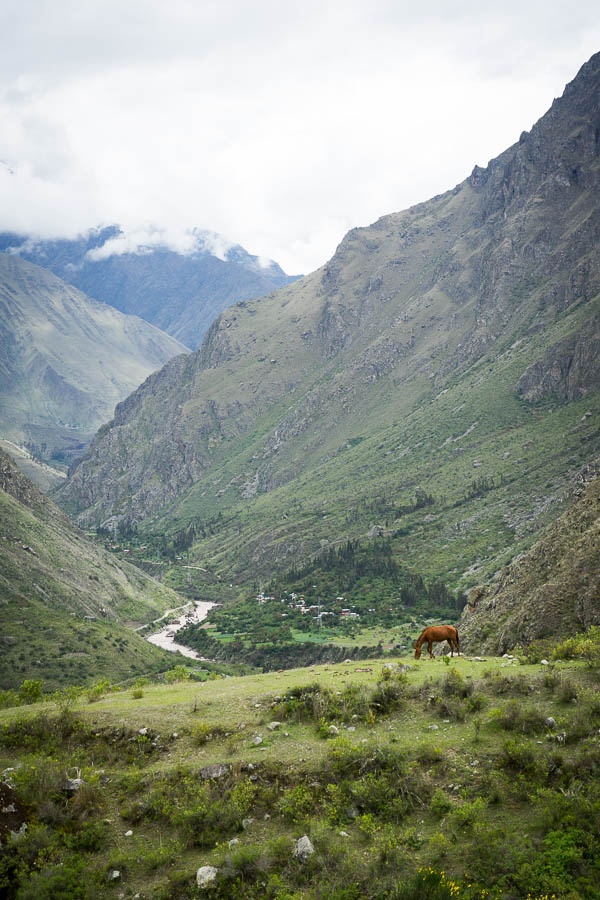
About three miles later we left the Urubamba River behind and started the ascent along the steeper Cusichaca River. This soon led us to the first Inca Ruins we’d pass on the trail: Llactapata, keeping a watchful eye on Patallacta in the valley below.
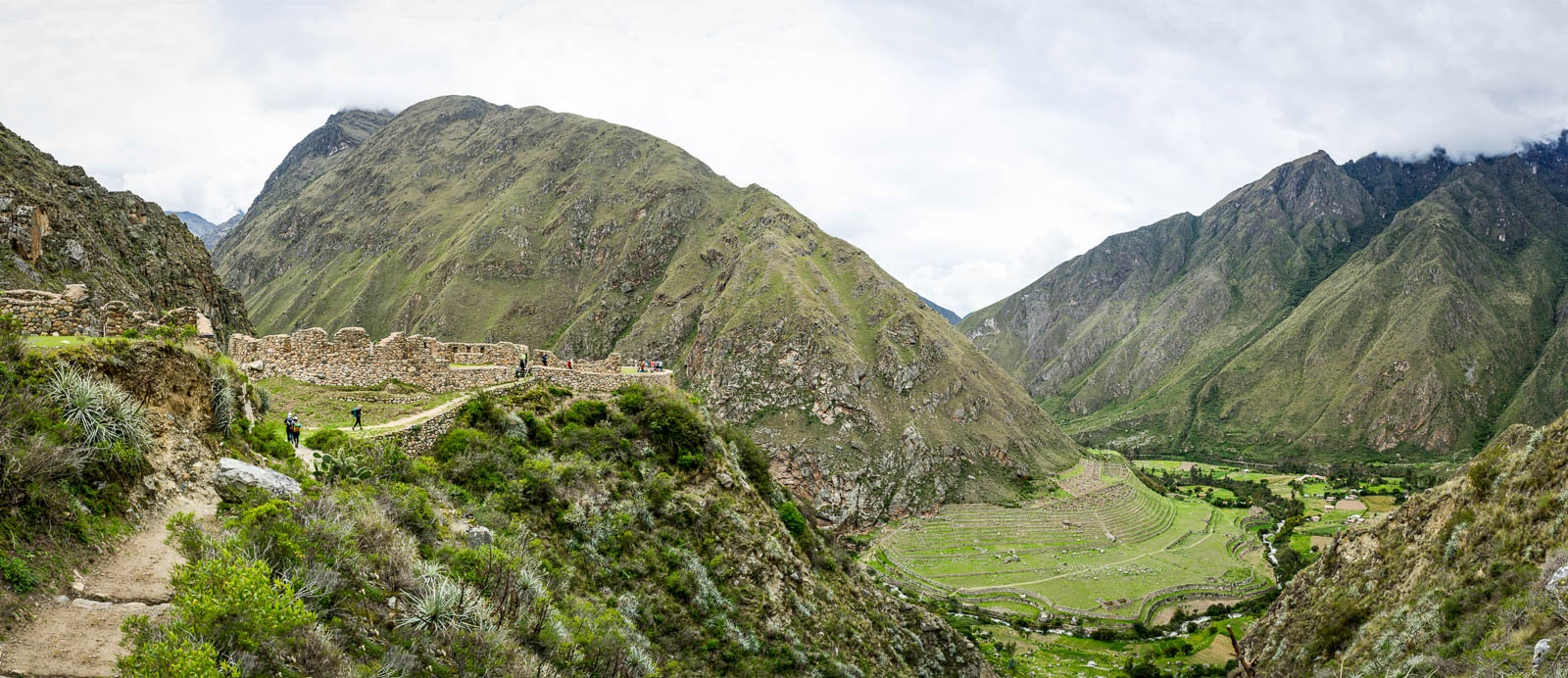
I was overcome with great joy here - walking almost alone through these Inca ruins in the rugged Andes… this is exactly what I was looking for. Such ancient history, magic and magnetism, some ineffable pull on strings that lay quiet waiting for just this moment…
Old longings nomadic leap,
Chafing at custom’s chain;
Again from its brumal sleep
Wakens the ferine strain.
“Atavism” came to mind, both the word and the John Myers O’Hara poem.

What a beautiful world.
The names of these places, by the way, are not the original names - those are long forgotten. These names were given these places by those who “discovered” them, usually American adventurers in the early 20th century. “Discovery” here means that someone spoke to locals, who knew about the ruins and took the explorers there. Chief among them was Hiram Bingham, the legendary adventurer and (some say) inspiration for Indiana Jones.
We climbed for a few more hours that day, had some dinner, and admired the stunning clear night sky for a while before settling in to sleep early. We’d be waking up around 5 the next morning - a long day lay ahead.

Day 2: Dead Woman’s Pass
After a hearty breakfast, we set off early. The second day is the most challenging, with some 4,500 feet of elevation gain, and a peak altitude just shy of 14,000 feet at Dead Woman’s Pass.
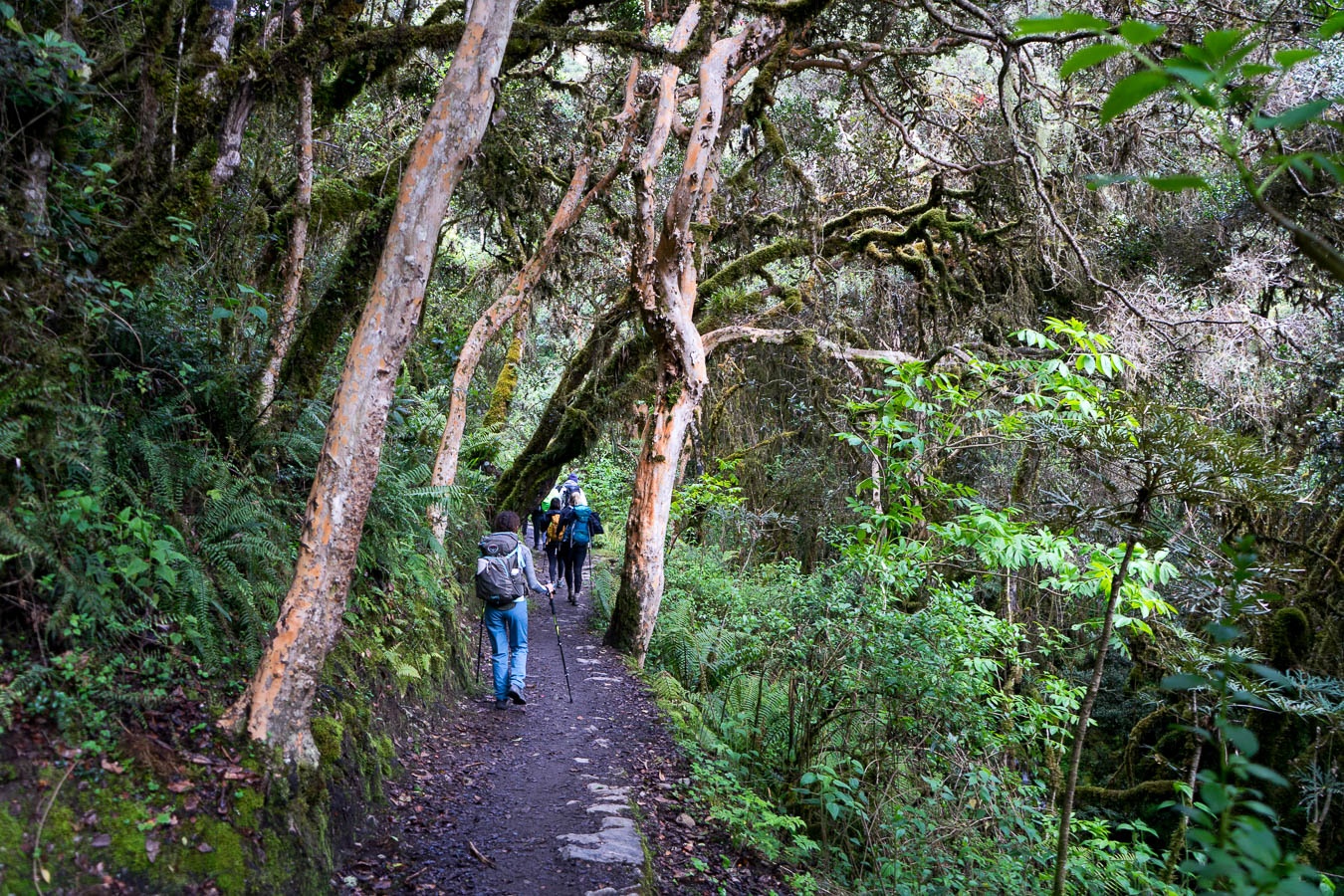
The trail passes through multiple microclimates - in the morning we passed through the lush Cloud Forest, and a few hours later we were walking through barren passes.
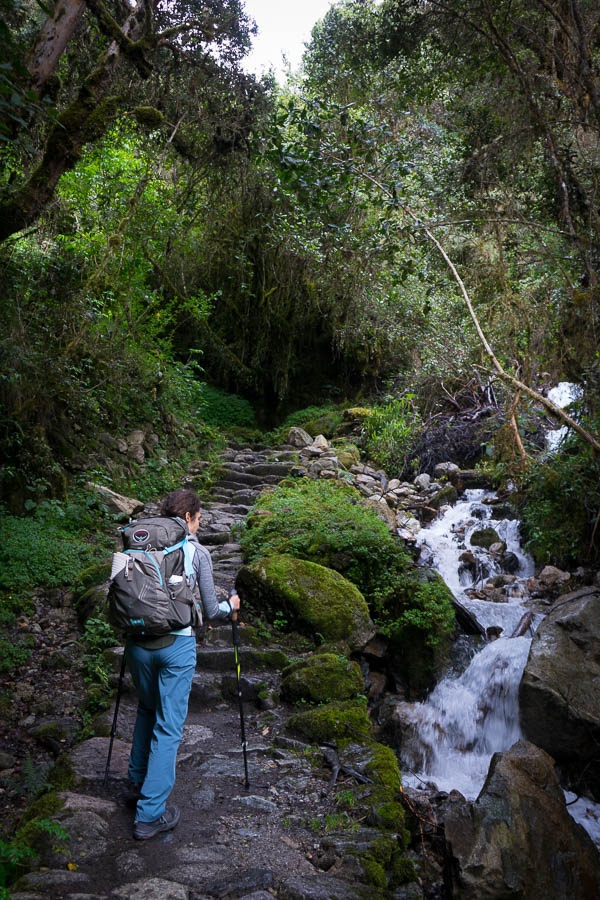
Demand to hike the trail is high (though much lower now due to covid), and so it is only allowed to trek here through one of the local companies. For branding, these all have a strongly established color identity. We went with the green machine of Alpaca Expeditions and simply referred to the other companies as “the blue company”, “the gray company”, “the purple company”, and “the orange company”.
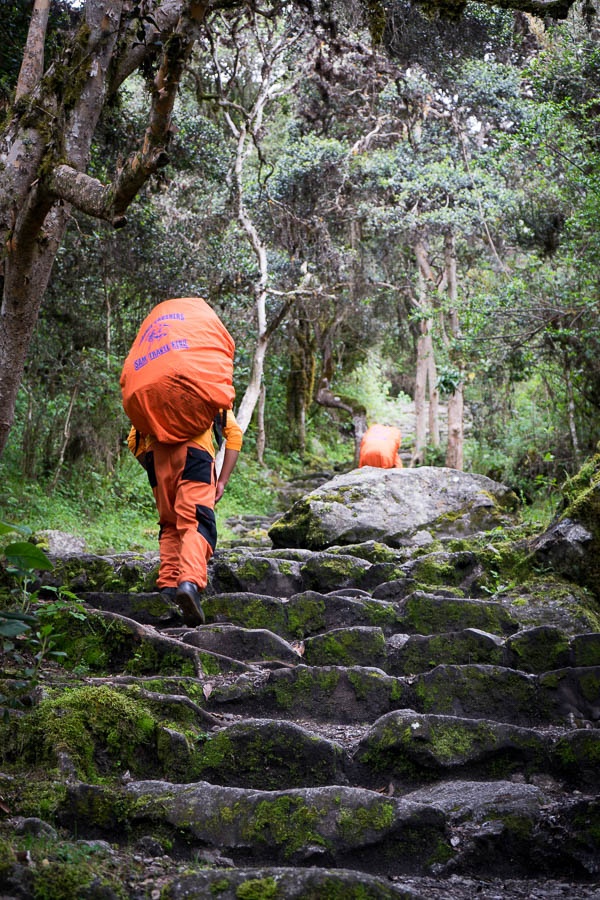
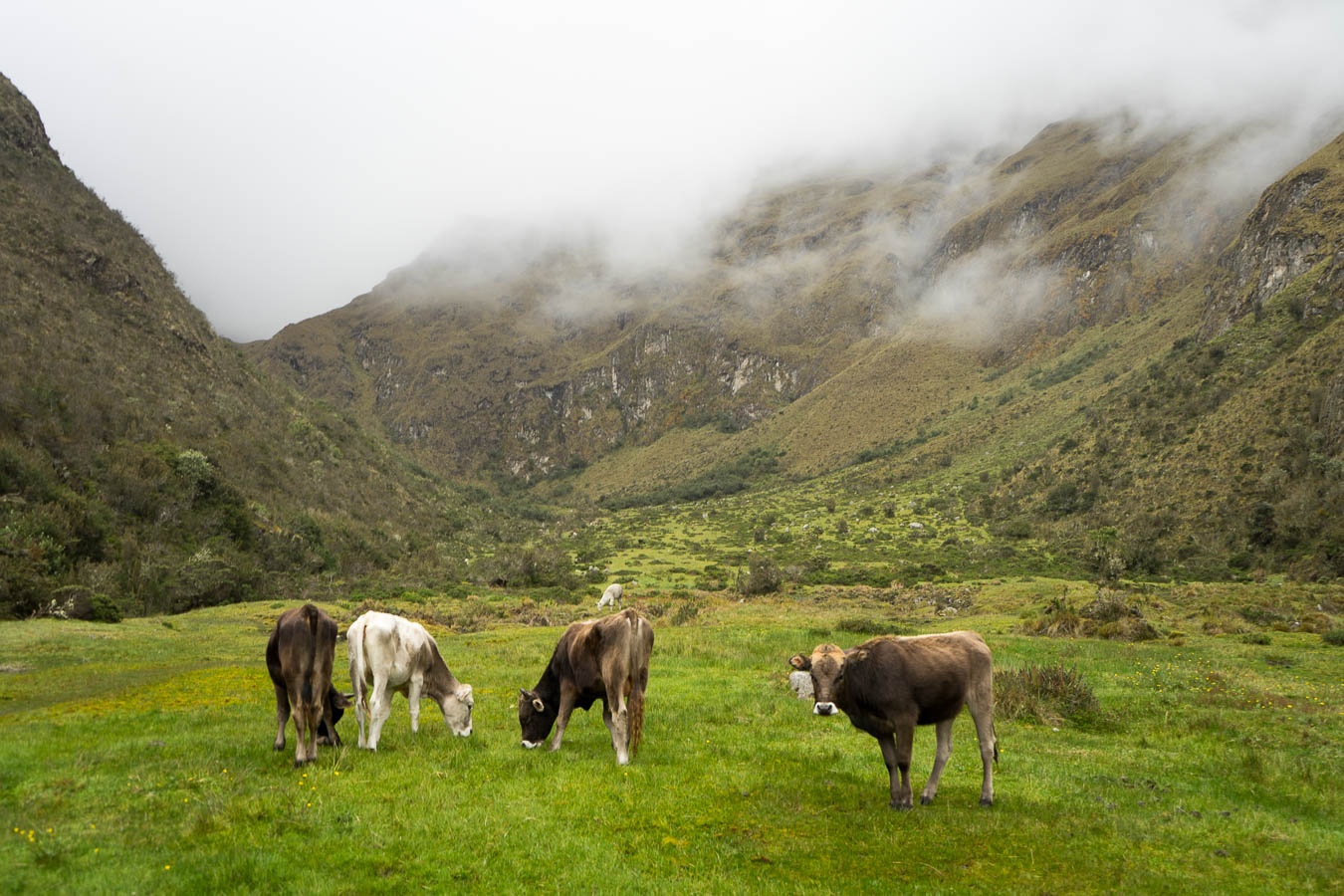
The December weather in this part of the Andes is mercurial, and we got our taste of rain on the climb to help sharpen our senses.
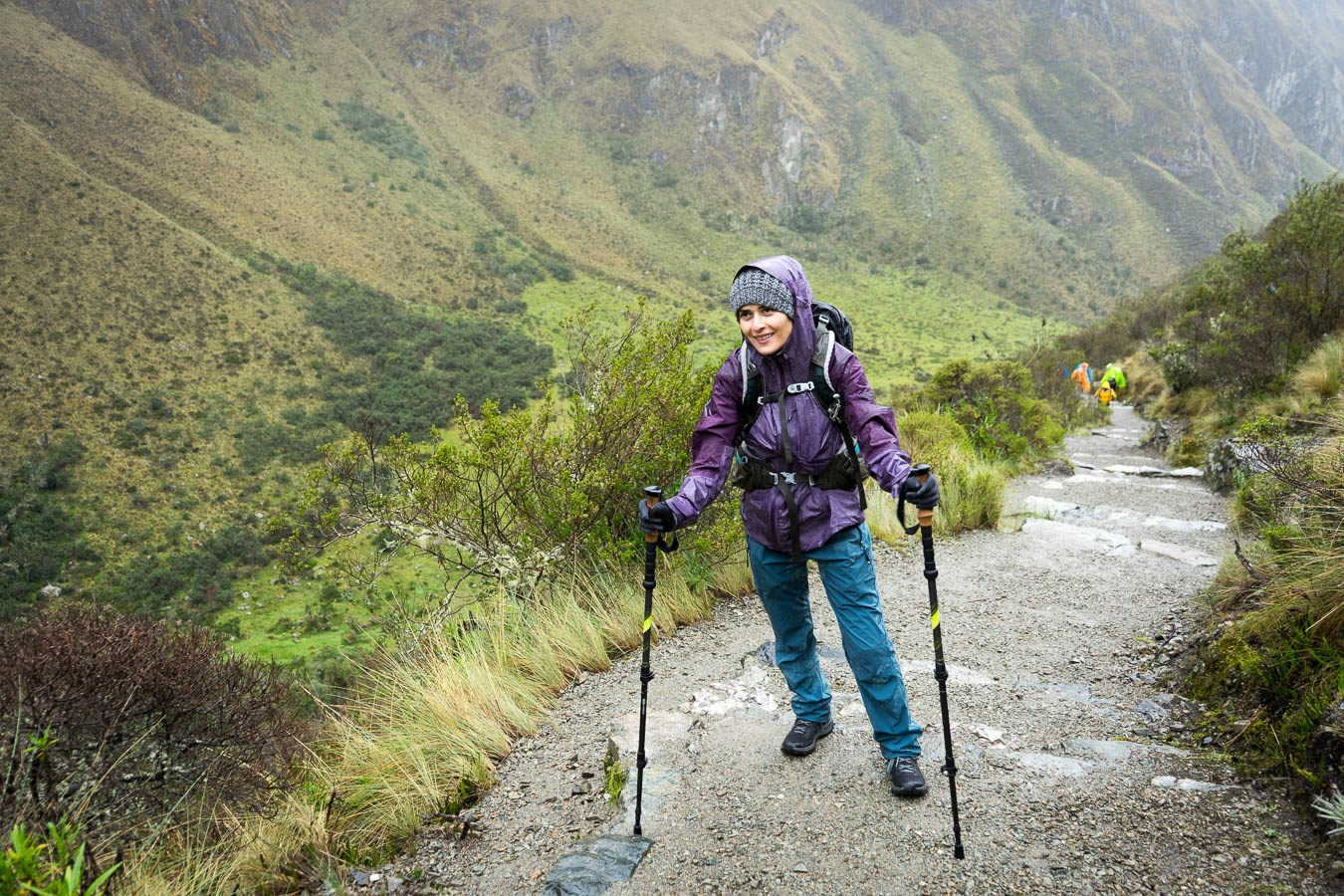
The view from the top, after hours of struggle compounded by altitude, was amazing. I felt like the tough weather was a perfect match for the rugged Andes, and in my mind it improved the experience… the photos do not do it justice.
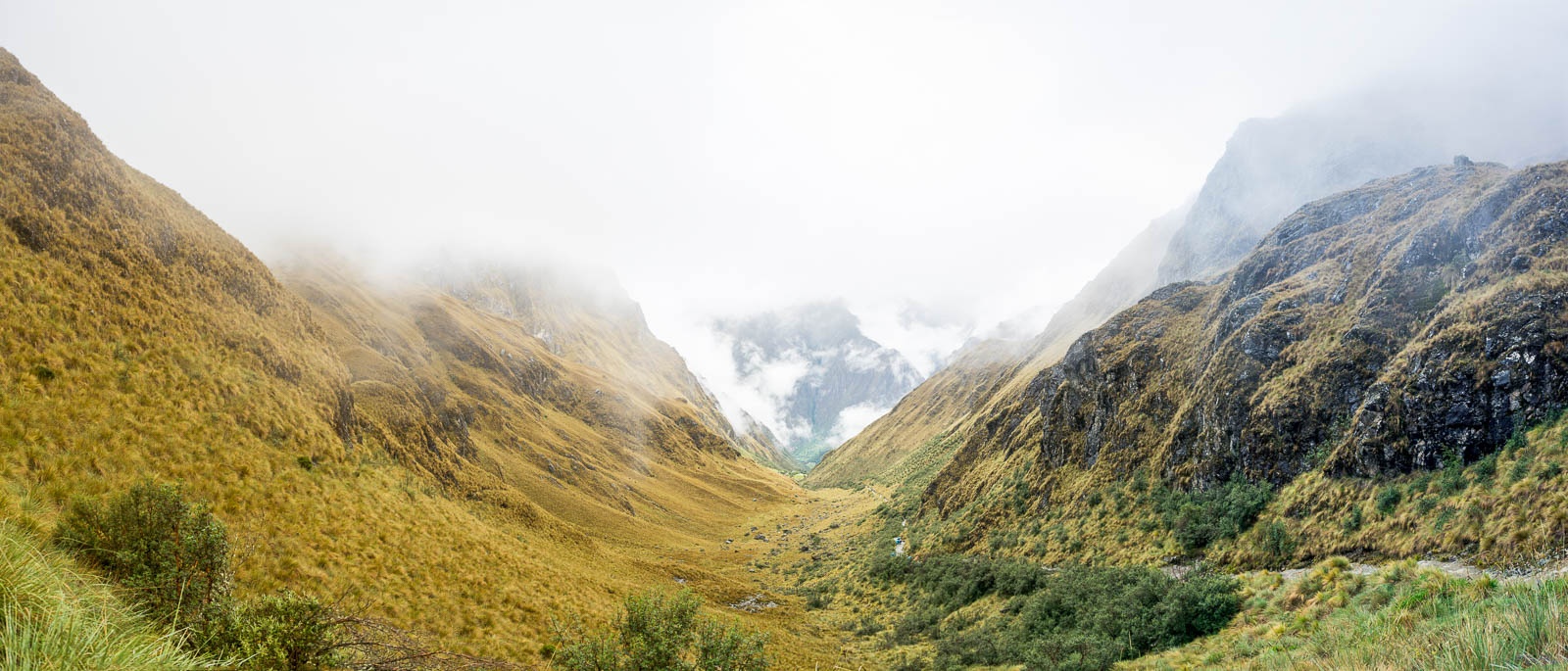
I will admit to wishing that my “water-resistant” gloves were instead “water-proof”. That’s a lesson learned.
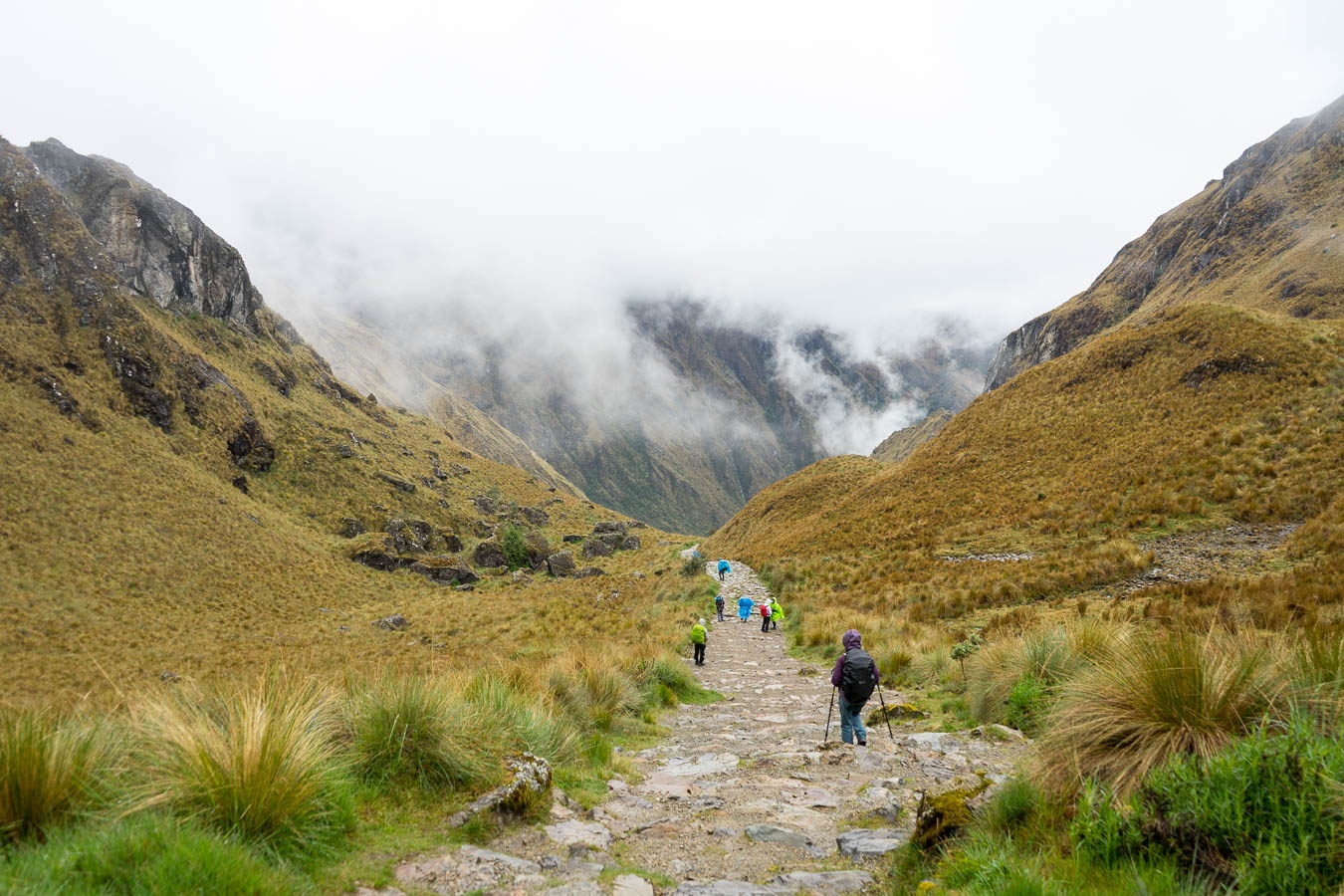
We climbed back down 2,000 feet, ate a quick lunch… and started climbing again.
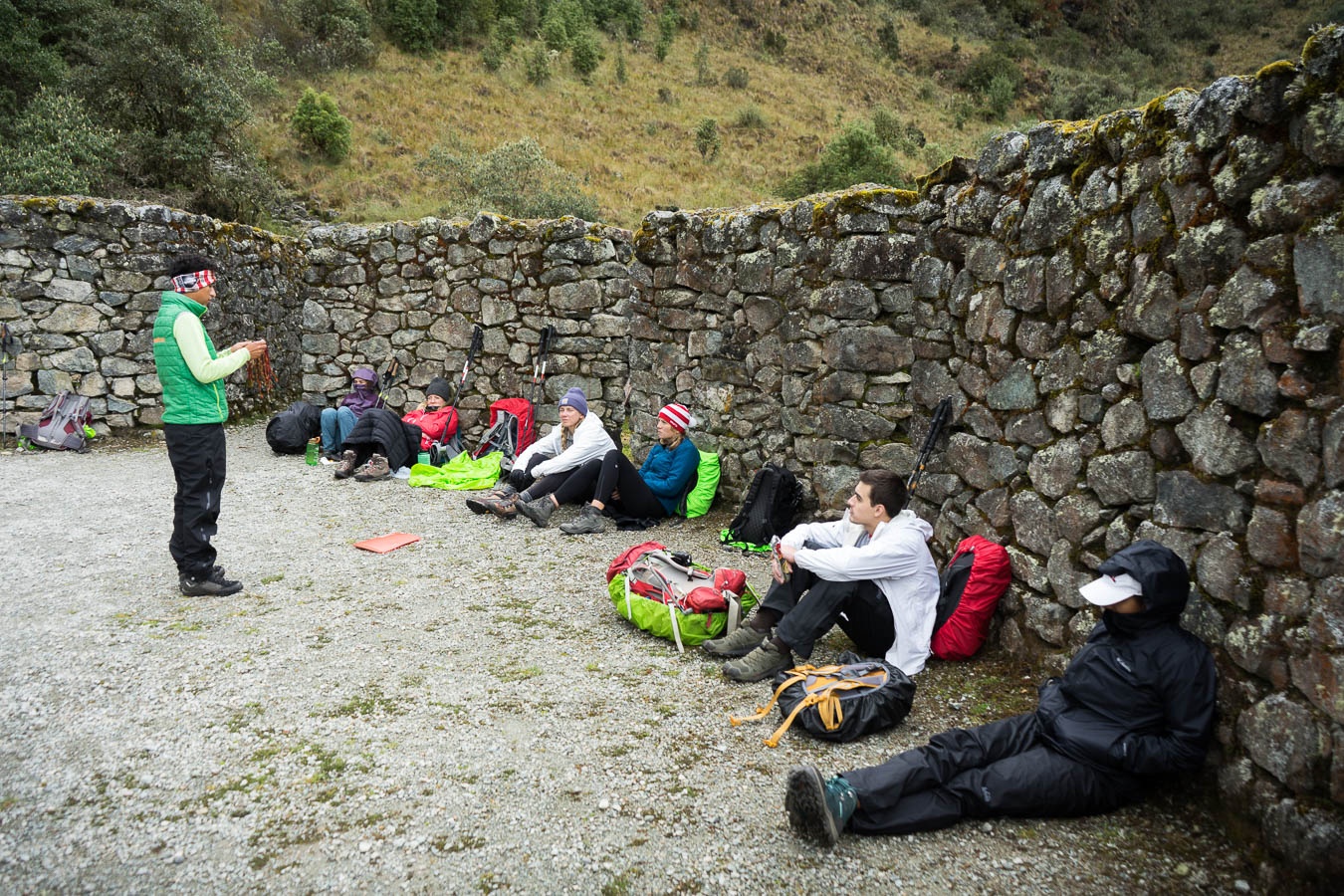
Quipu is the ancient method of recording information by knotting strings. We don’t quite know how to decipher them.

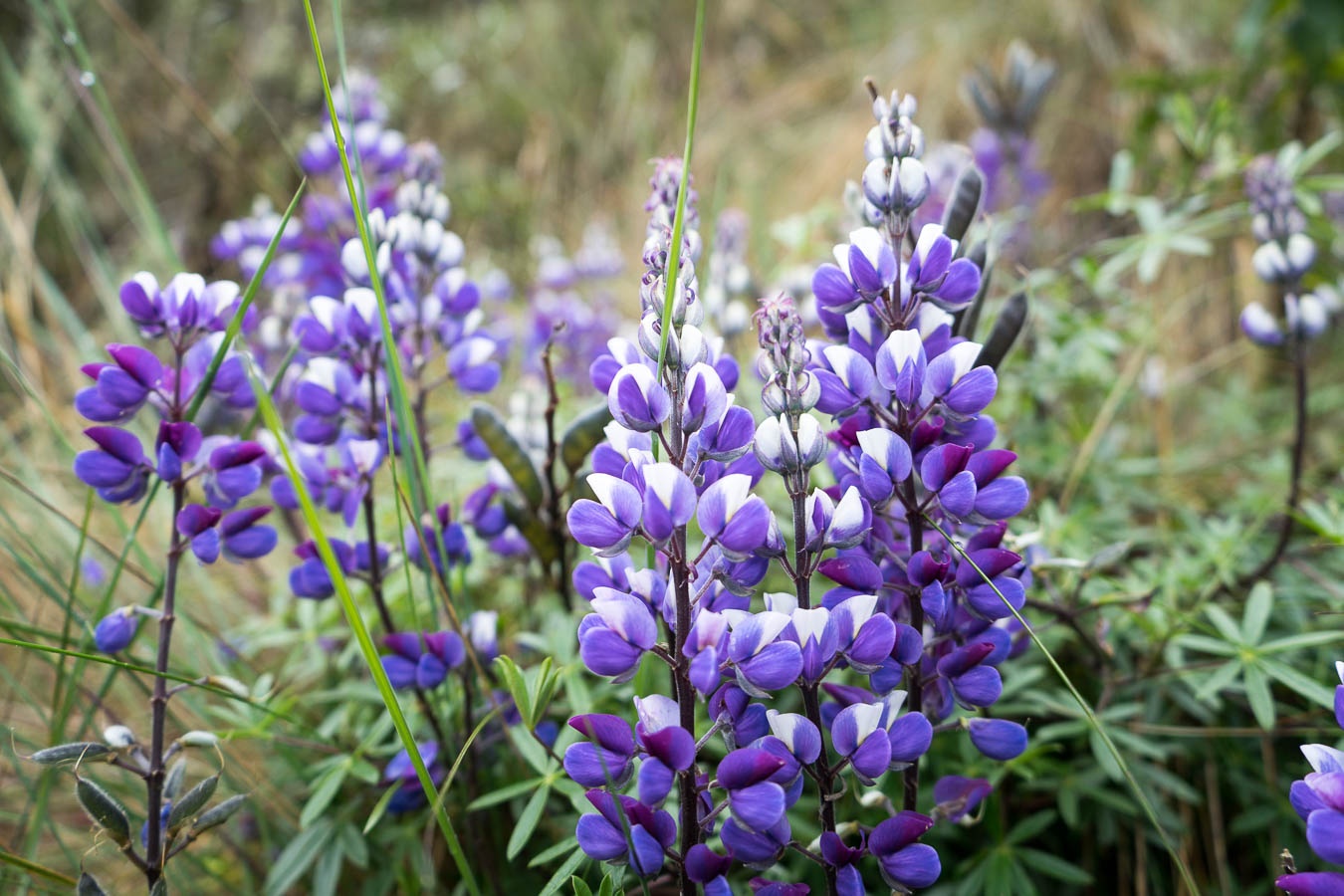
The second pass, Runkuracay, is at 13,100 ft. The view from here was excellent again.
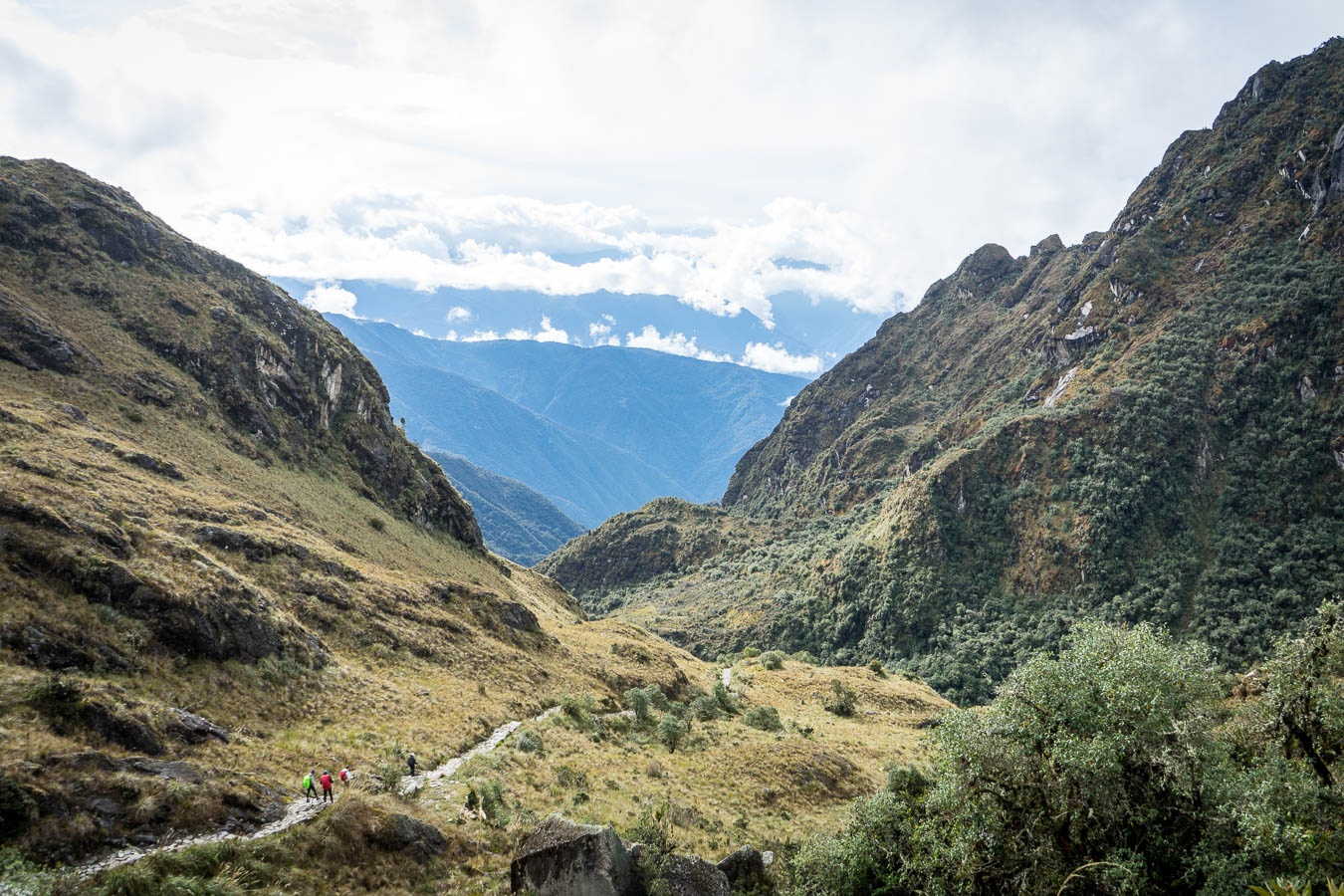
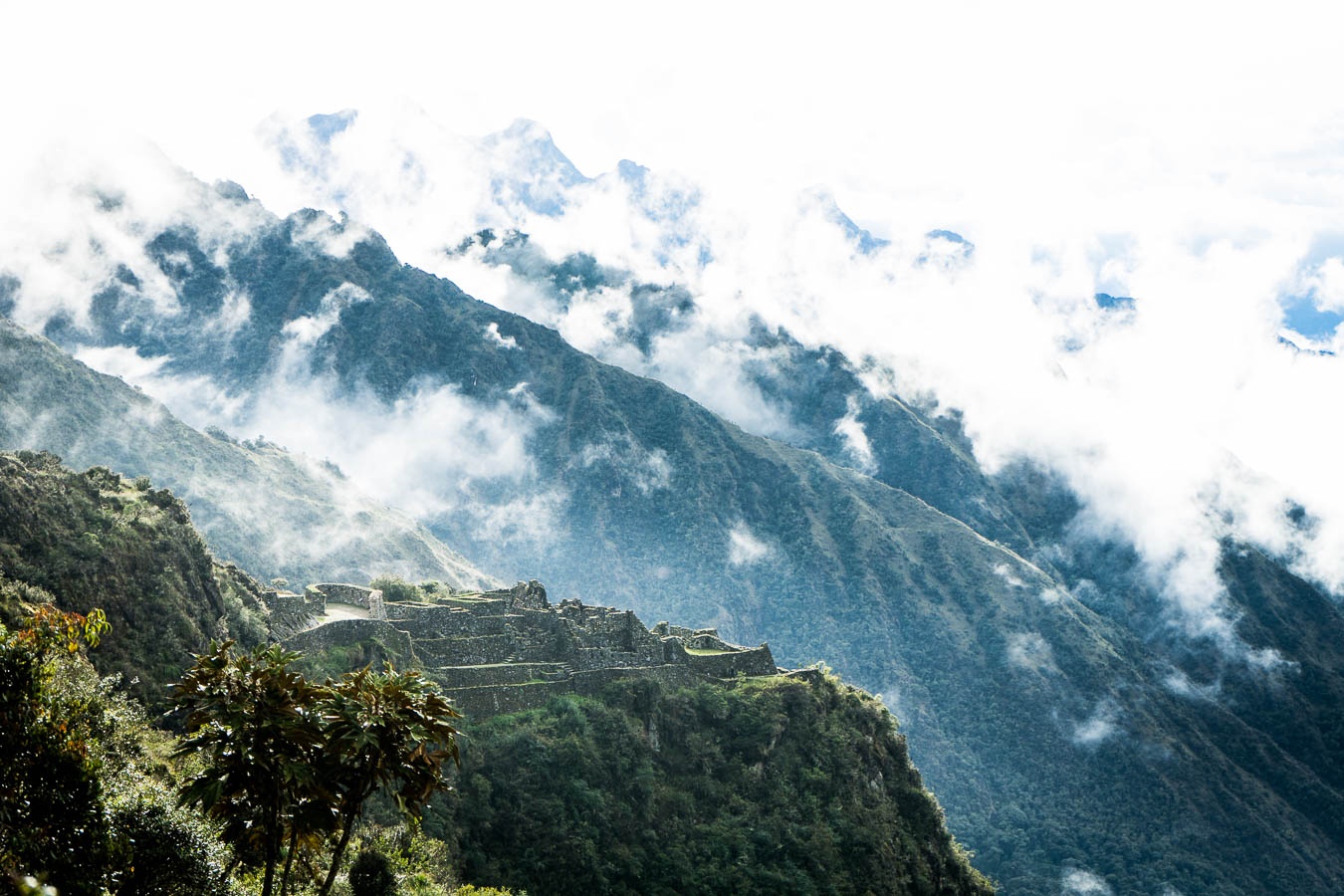
Sayacmarka is an ancient fort that watched the western access path to the mountain passes from a perch in the mountainside.
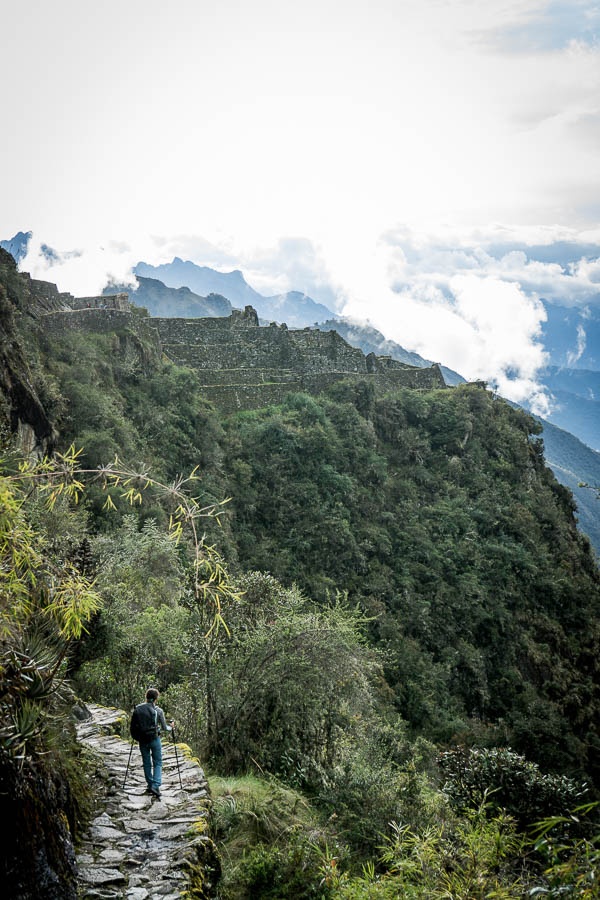
Walking through Sayacmarka was one of my favorite parts of the trip. Our group of nine was alone up there, the weather was changing quickly, and the fort stood solemn watch just as it had for centuries. I think in this way in particular the trip exceeded my expectations - I truly loved wandering these ancient corridors alone.
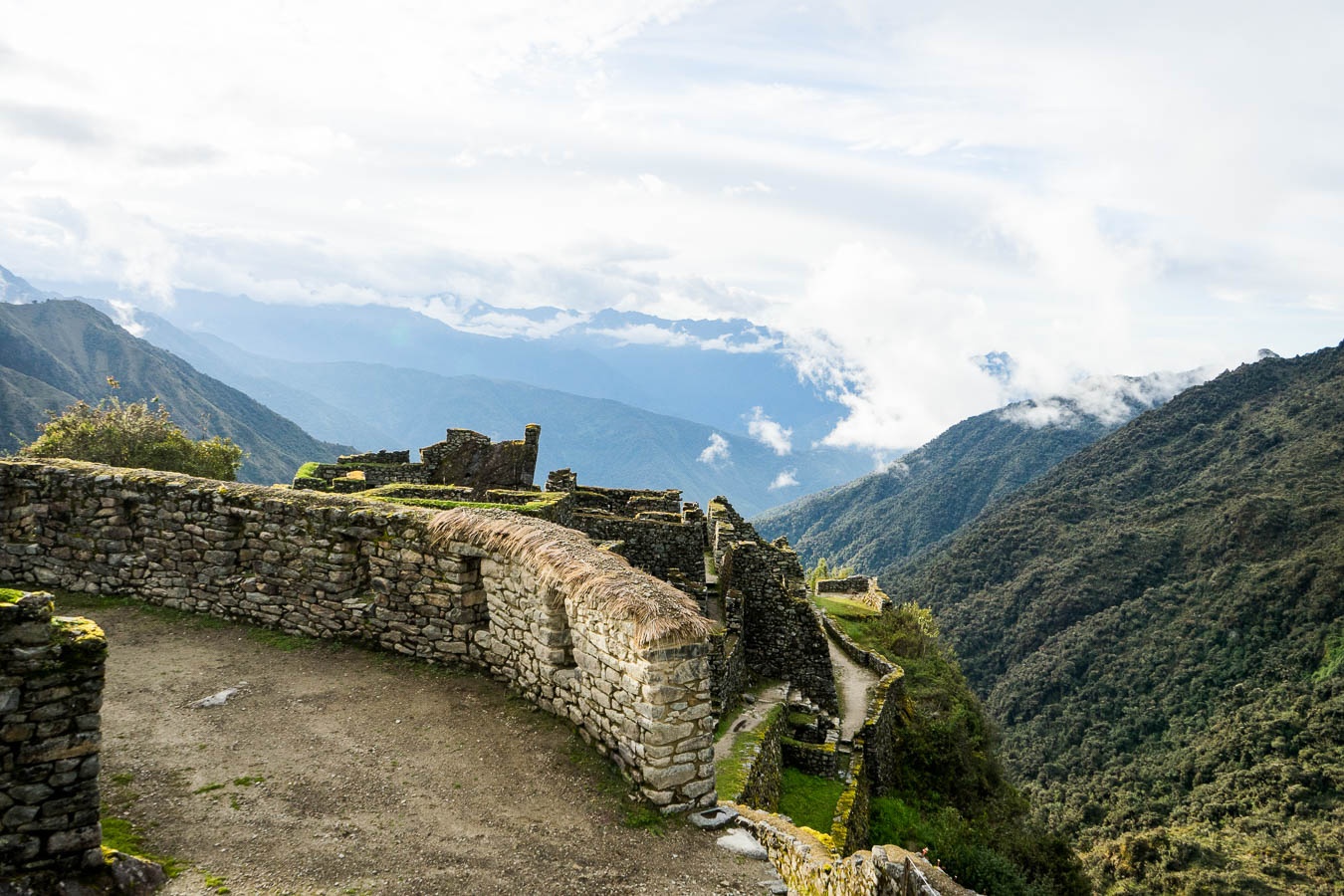
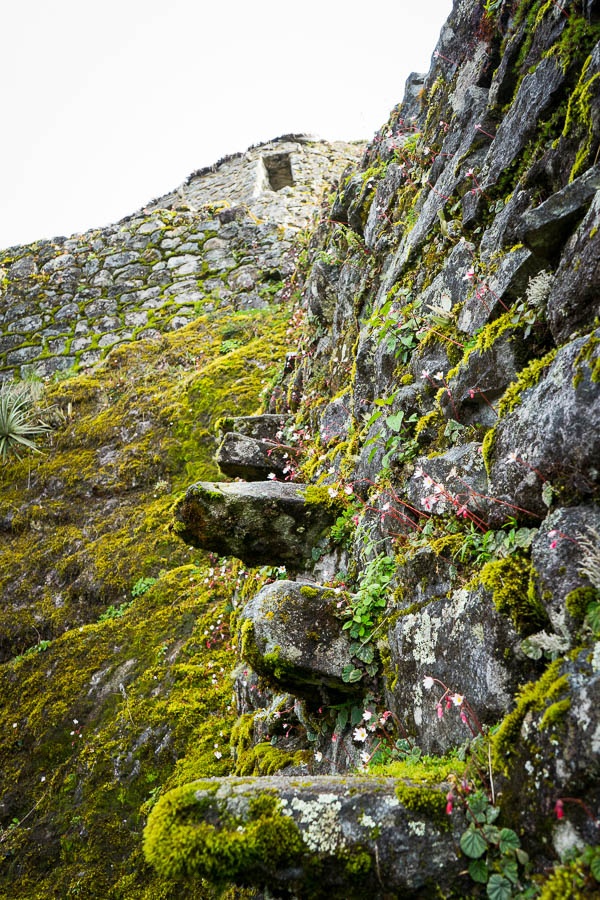
Porters not only carried our tents (and just about everything else), but they also set them up for us. They left in the morning after us, passed us, cooked us an outstanding lunch, left the lunch spot after us, passed us again, and then welcomed us to a campsite already setup, including our tents. This is what princes must feel like.
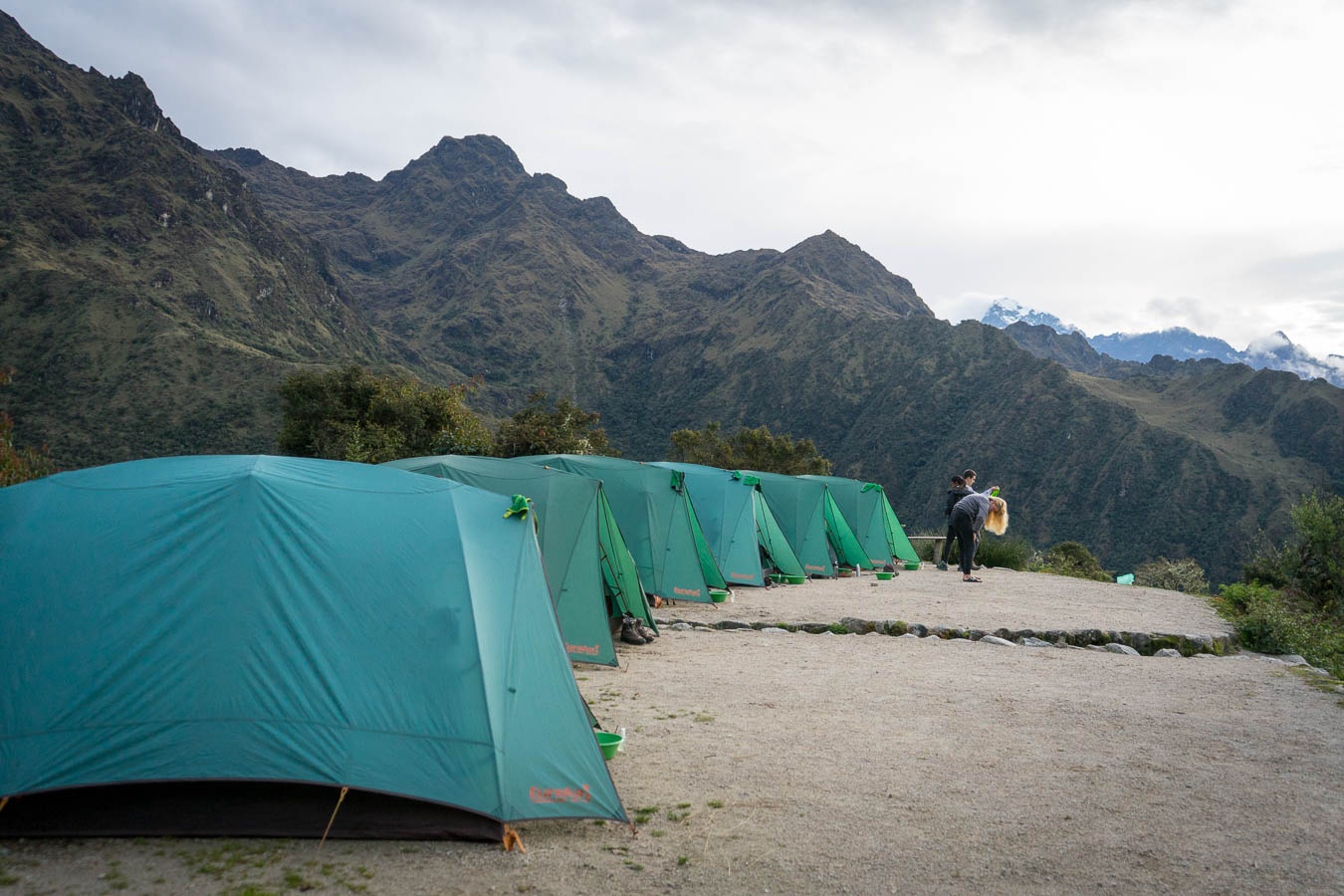
Day 3: Down to Winay Wayana
We celebrated Christmas on the morning of the third day to a beautiful view.
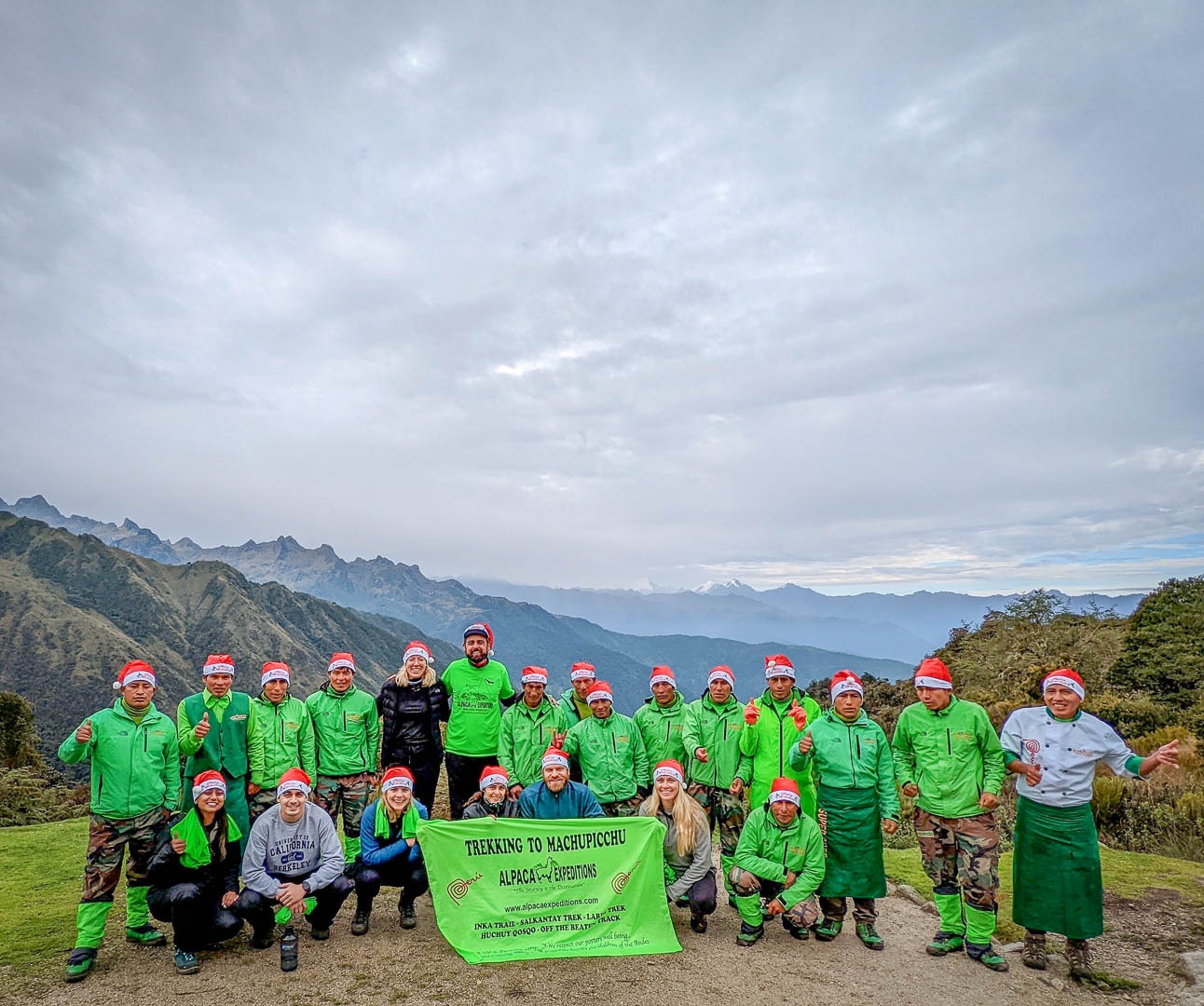
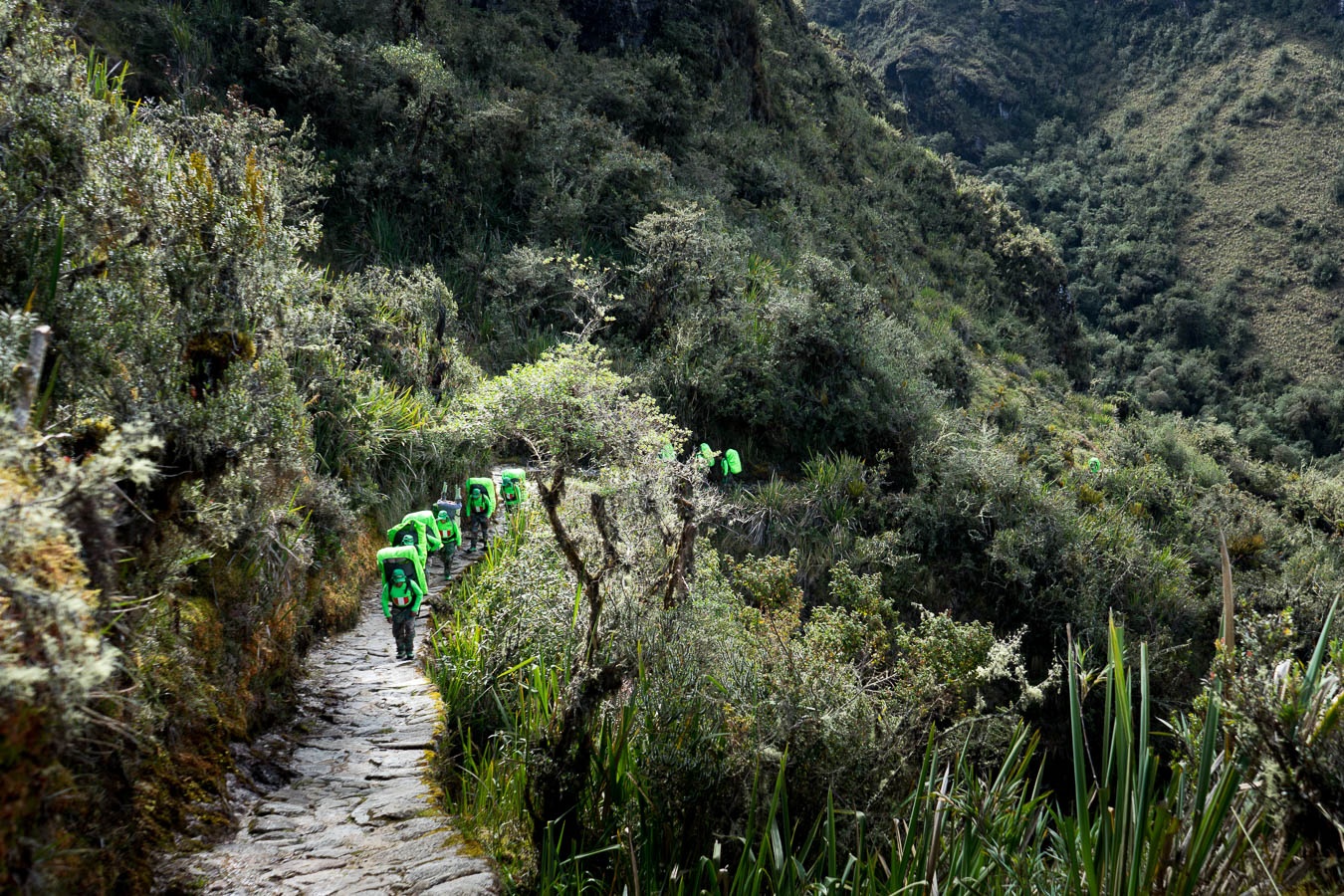
Many of the porters’ Spanish was no better than mine - they are people from the local mountains, and their native tongue is Qechua.
Much of the day they’d be sucking on coca leaves for that extra burst of energy, resilience, to help with altitude sickness, for good vibes and general good health. We tried this also, but I found the tacticle feel of the experience - a bunch of dry leaves shoved in the corner of my mouth - not altogether pleasant. Coca tea, though, I loved and drank every morning. If it were available in the US I would probably drink it regularly.

We had a flat hike to Phuyupatamarca, followed by a long steep descent to Intipata. The locations of the outposts reminded me of the scene from the Lord of the Rings where Gondor calls to Rohan for aid with a sequence of bonfires over the mountains… see Intipata cut into the mountainside in the distance in the photo above.
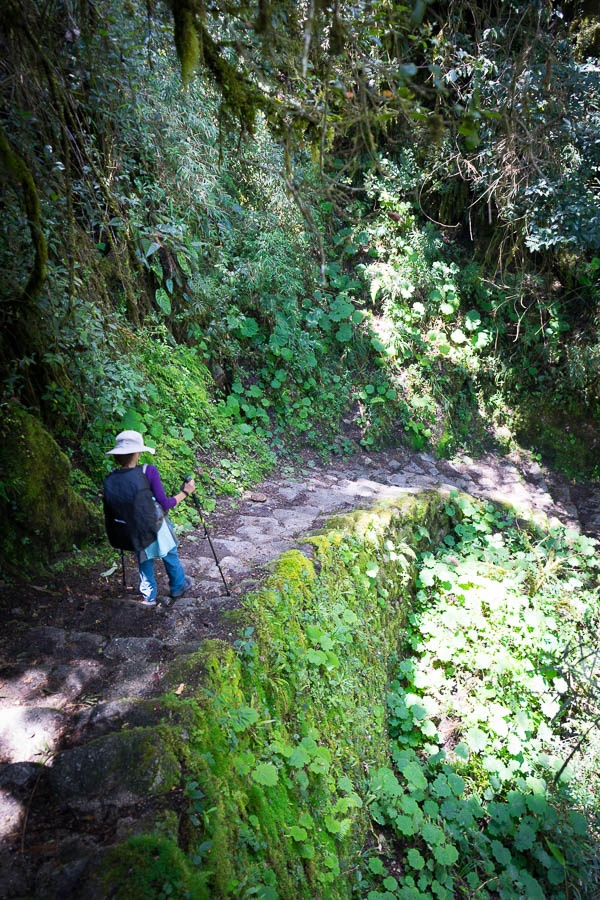
Rodrigo explained that about 80% of those stones are original - paving the Inca trail here for centuries.

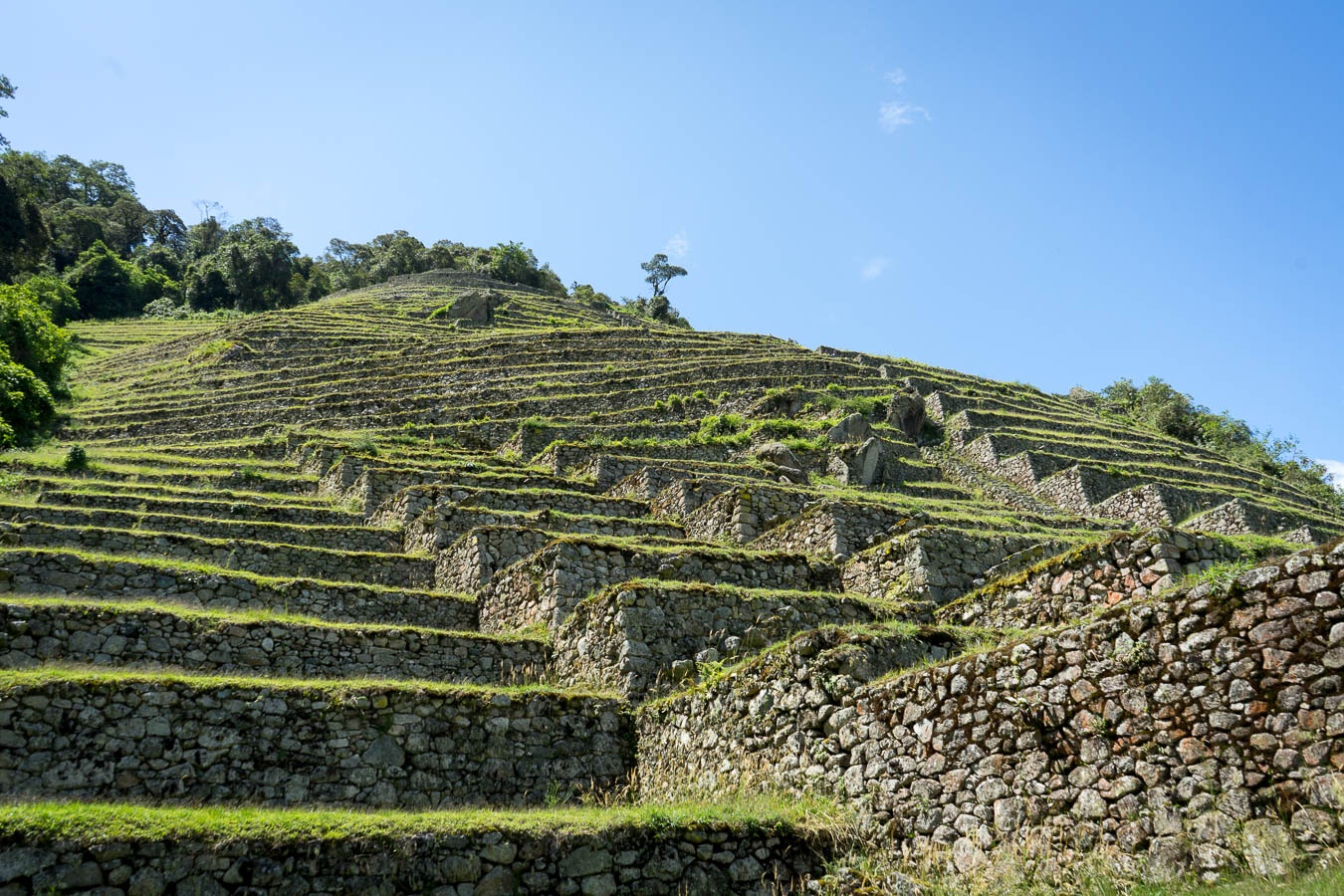
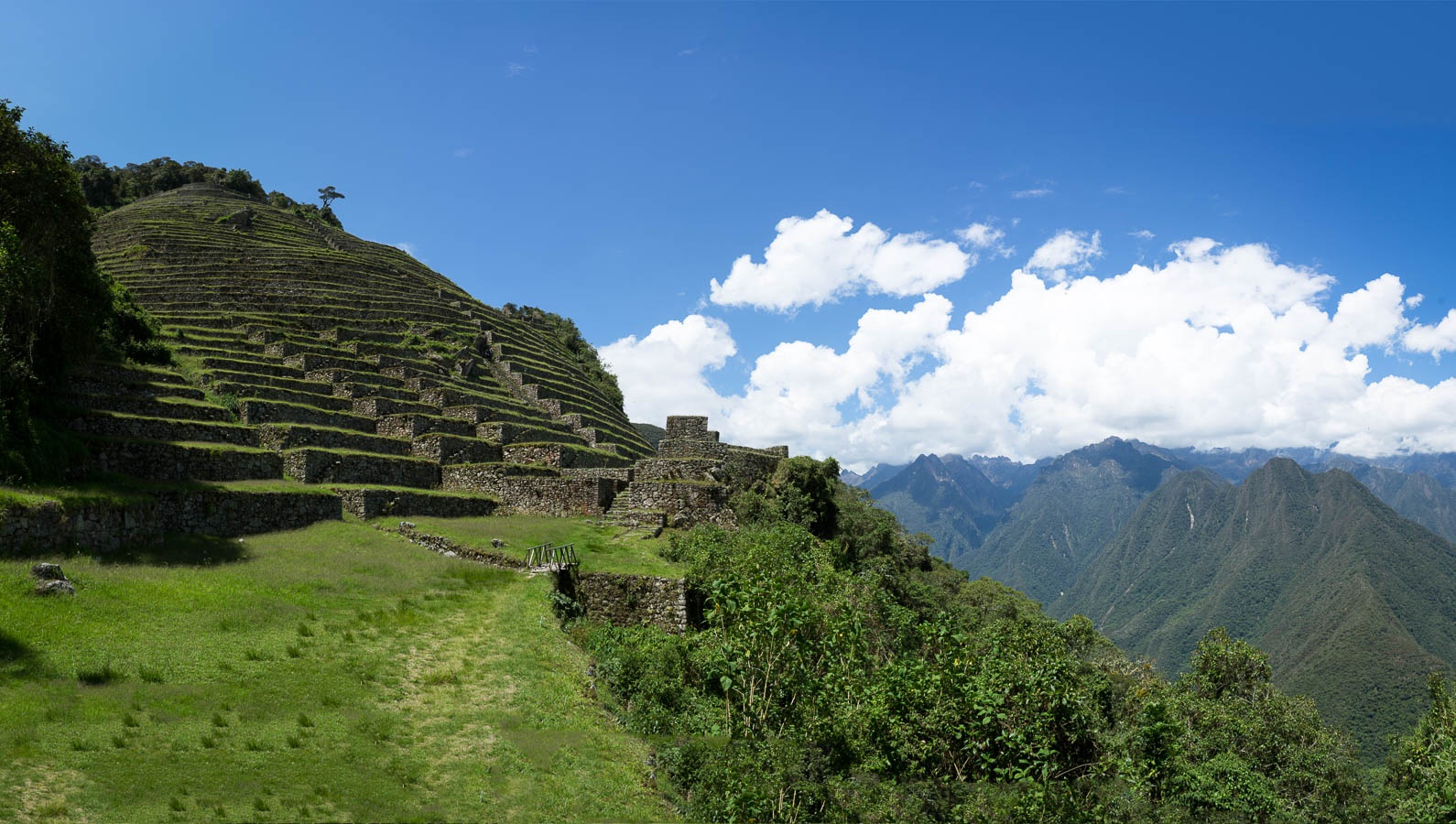
After a tasty lunch and a longed-for nap, we went on a short walk to Winay Wayna.
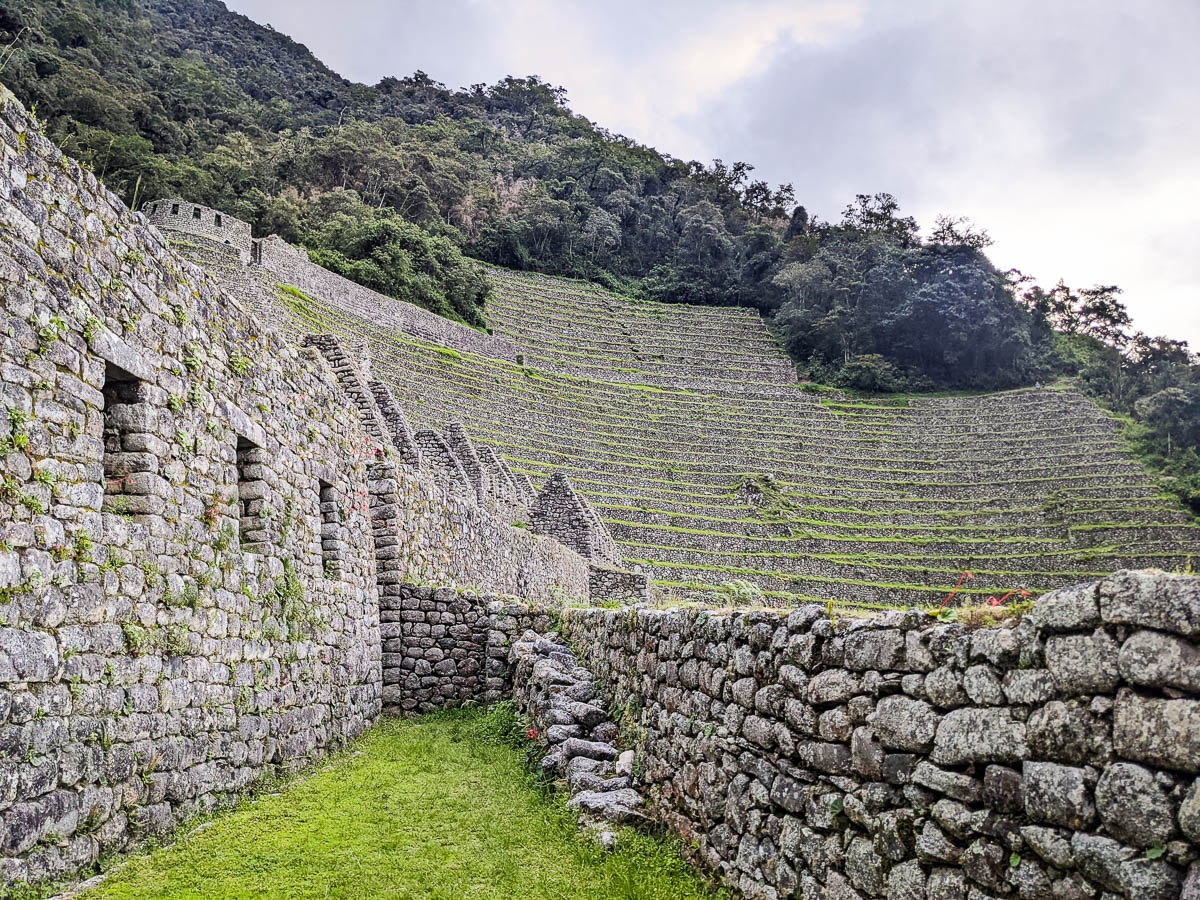
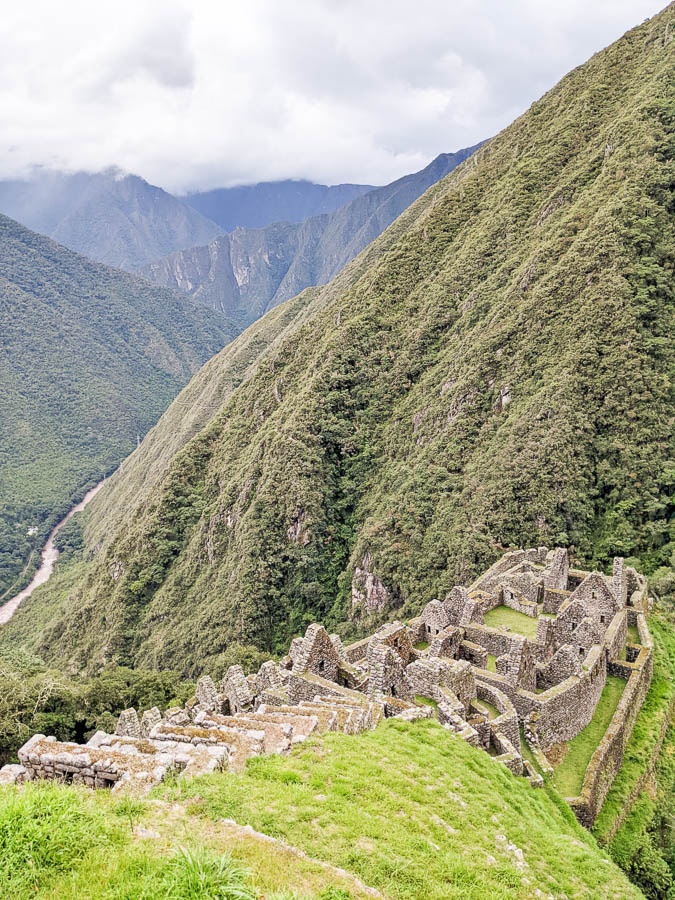
Day 4: Machu Picchu
Finally came the morning of the fourth day, when we’d reach the highly-anticipated finale: Machu Picchu.
We woke up bright and early - I think it was 4:30. After a quick breakfast we started hiking with the rising sun.
We climbed the feared staircase known to the guides as the “Gringo Killer” to the Sun Gate to finally, after much ado and excitement, after building up to this moment for twenty-something years, get our first view of Machu Picchu…
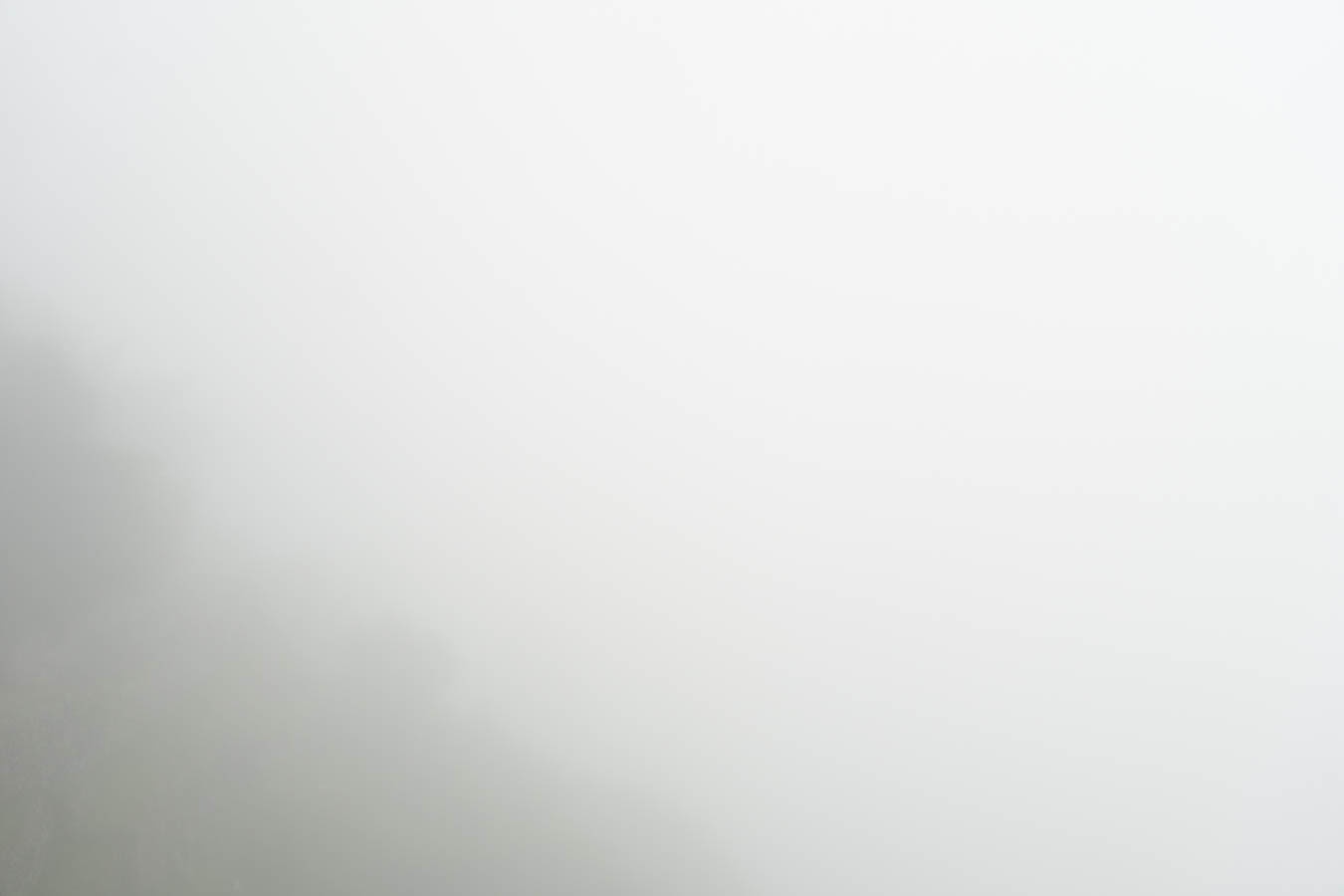
Yeah, the weather didn’t exactly cooperate, and we didn’t see diddly-squat. But hey, we did not lose heart and continued on our journey, and by the time we reached Machu Picchu the clouds finally started to burn off, and the payoff was so worth it:

It brought a huge smile to my face. We wandered the ancient city for a while.
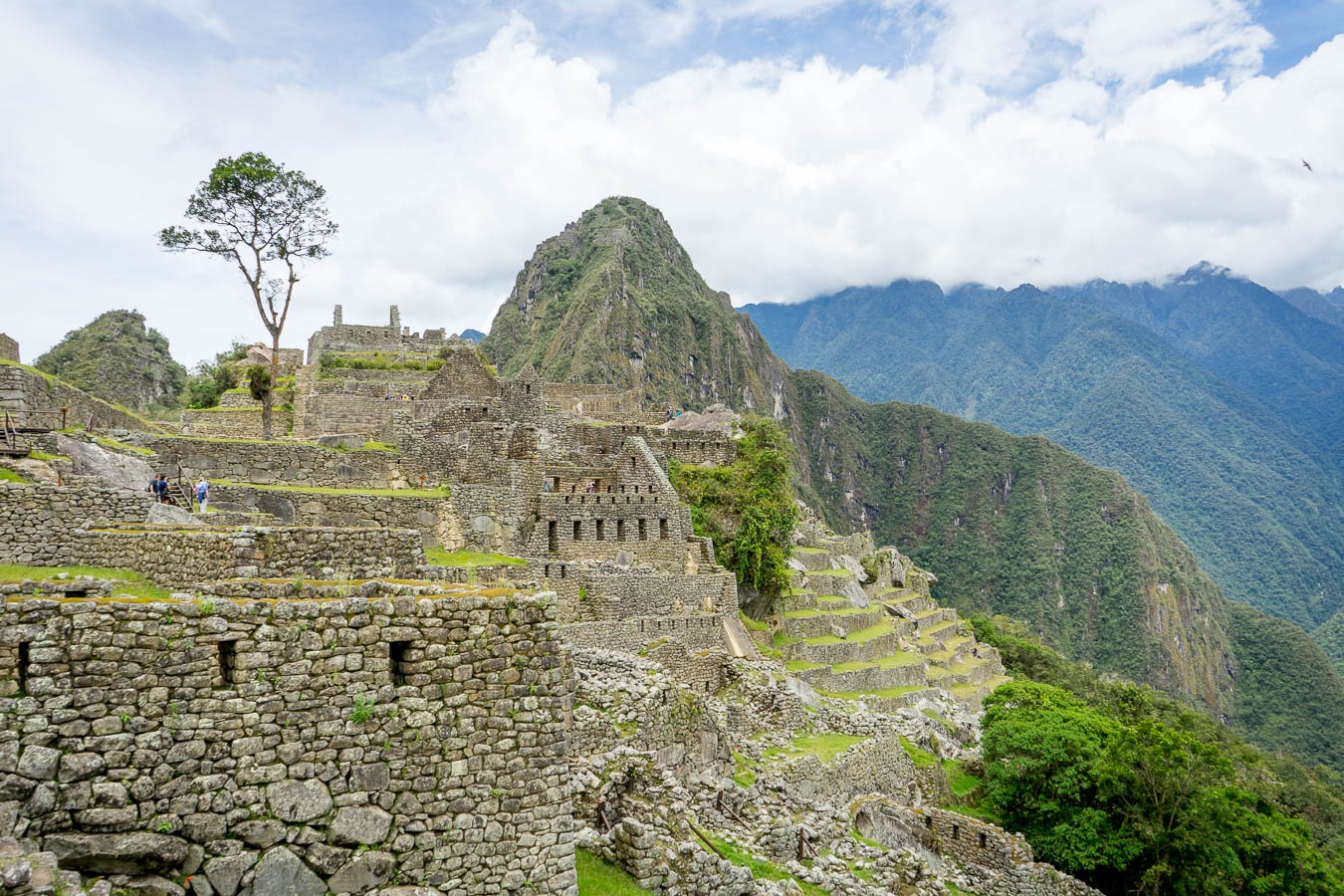
That mountain just past the city is Huayna Picchu, and a long set of steep, narrow stairs leads to a small outpost at the top… so of course I climbed up there, too.
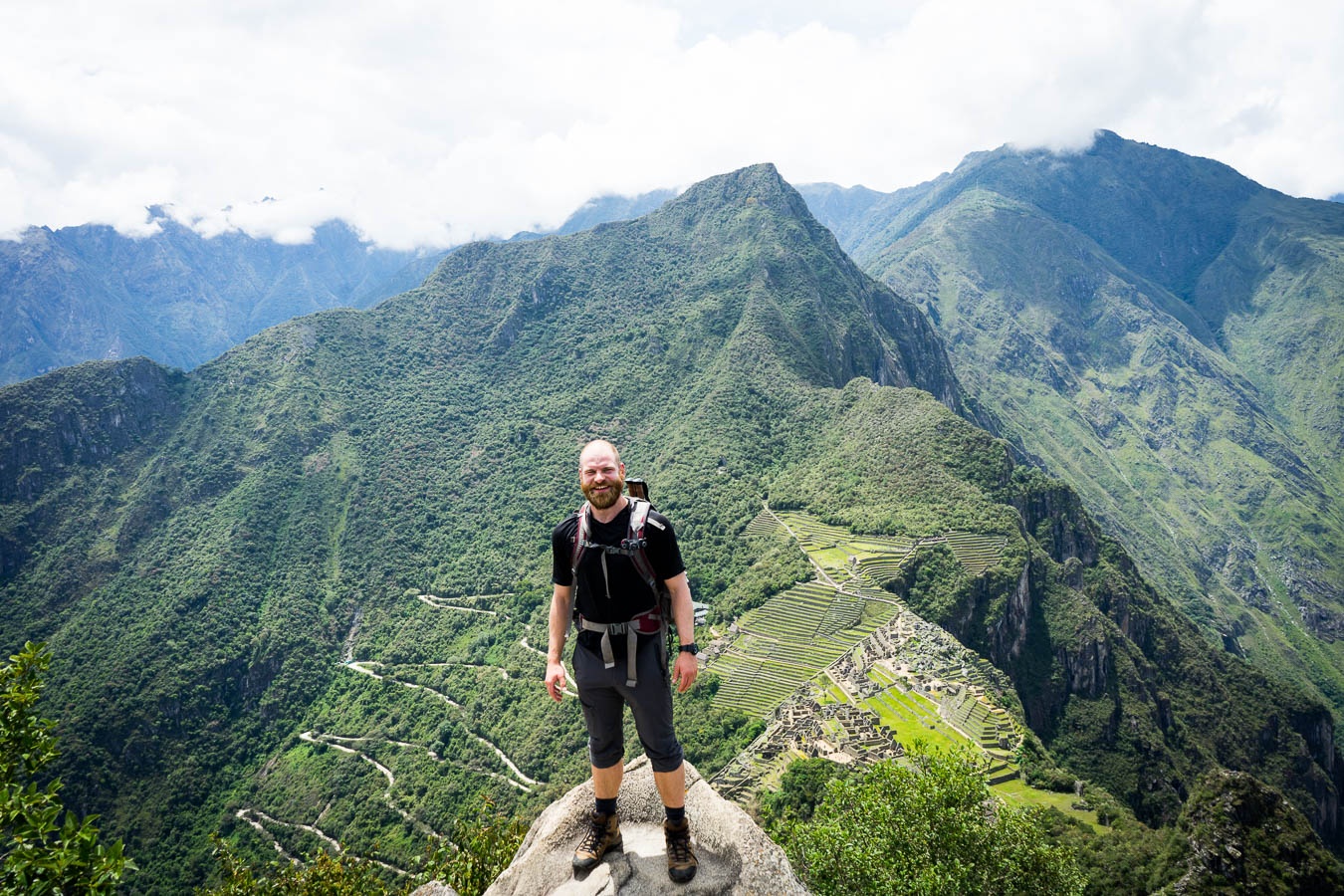
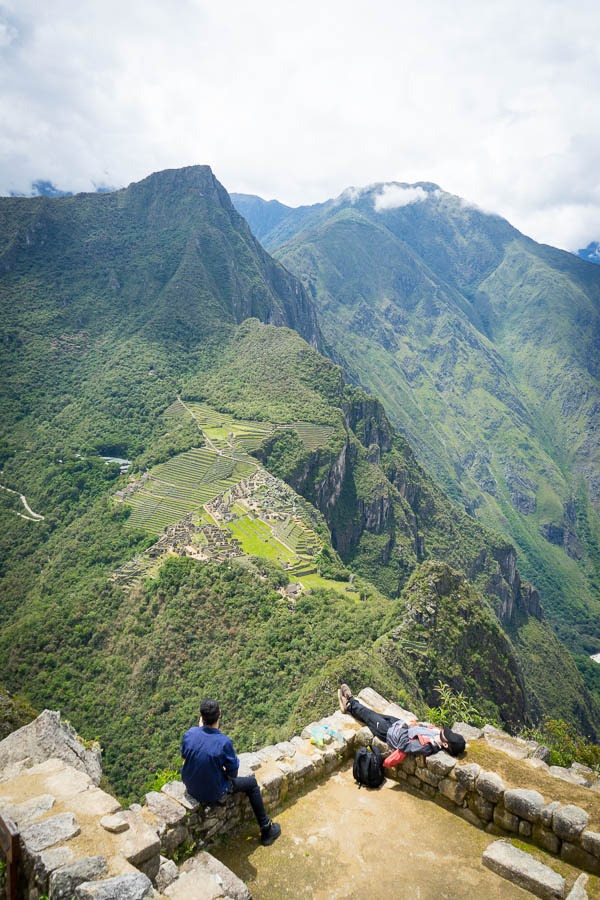
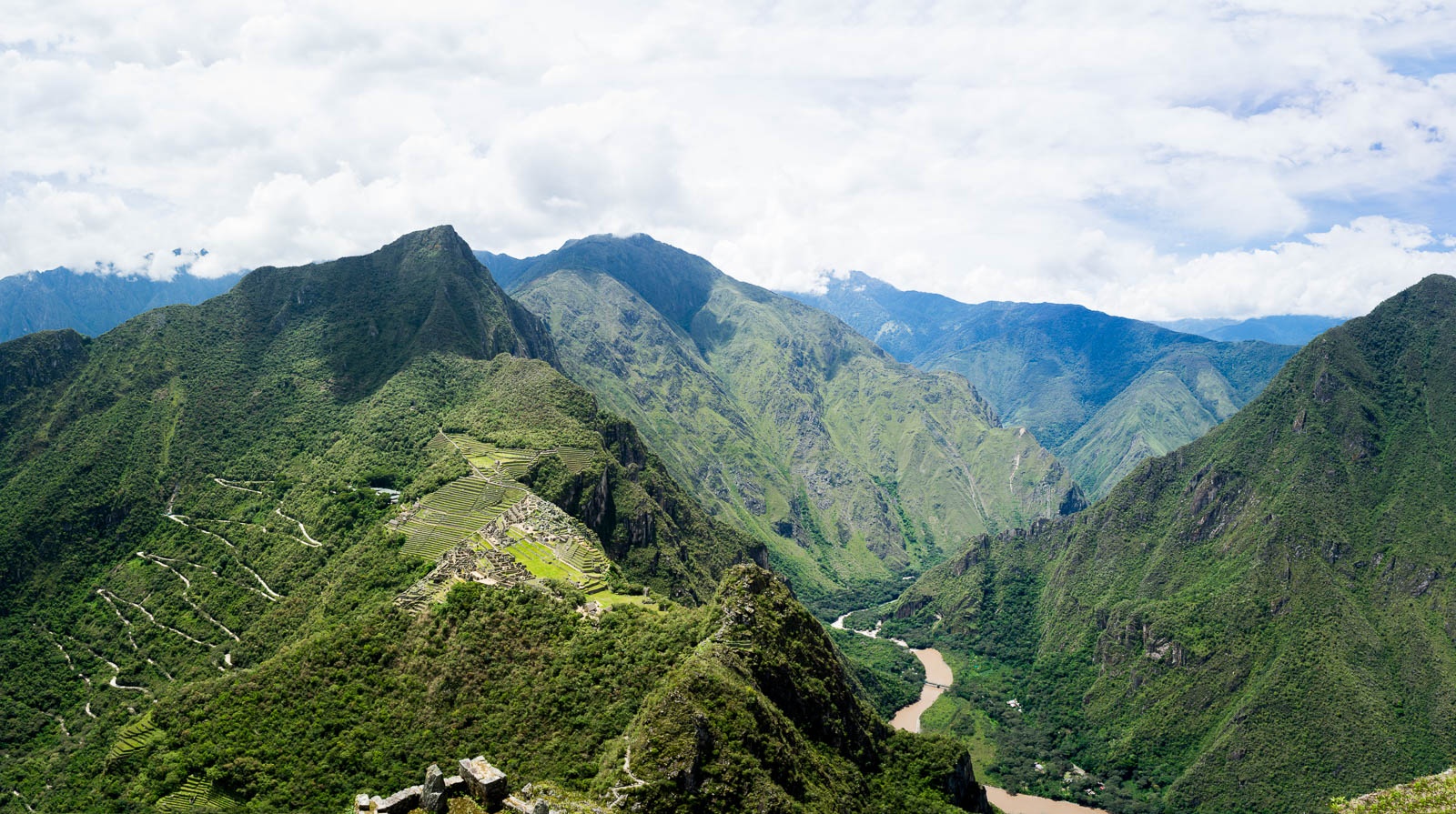
Machu Picchu was built by the Incas around 1450 as an estate for the emperor Pachacuti, but abandoned about a century later at the time of the Spanish conquest. No Europeans visited the site until the 19th century, as far as is known.
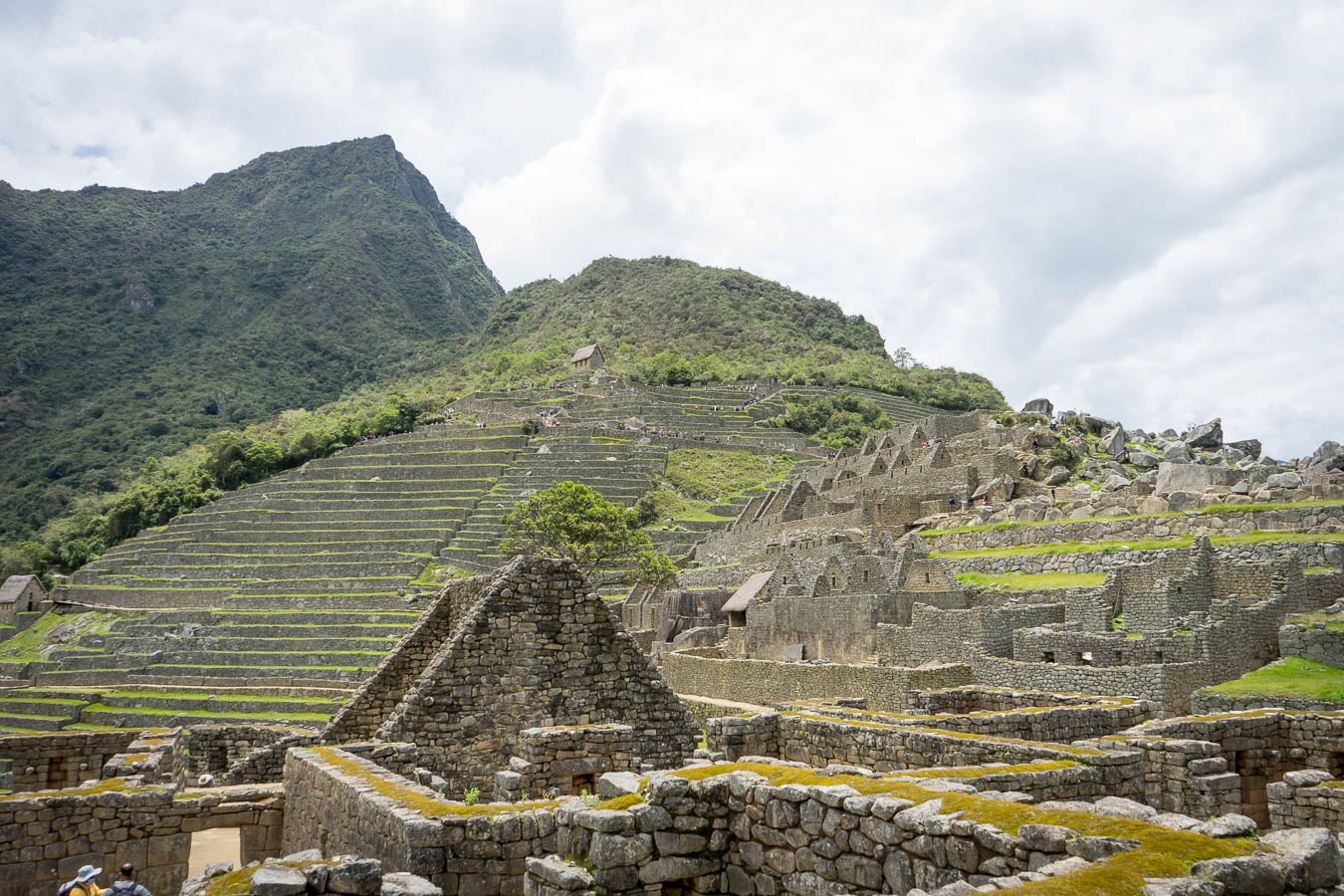
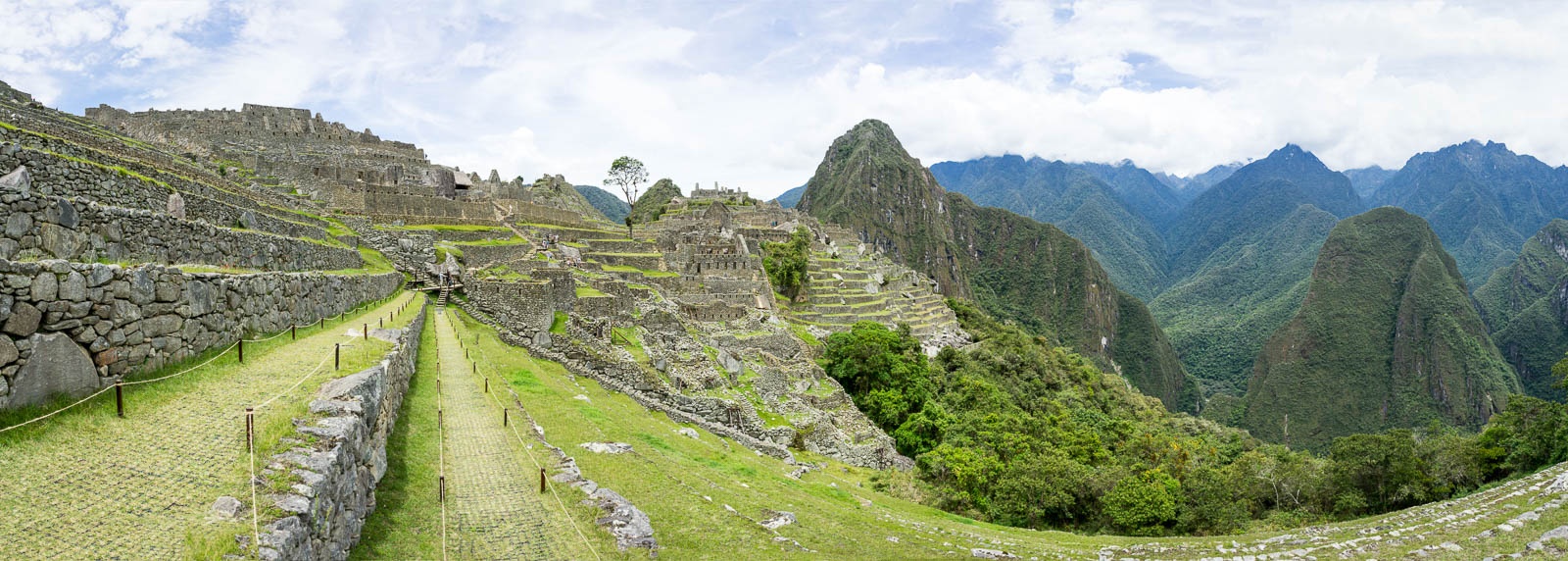
Thanks again to Alpaca Expeditions, our guide Rodrigo, the incredible chef Alex, head porter Gilberto and his tip-top crew, my fellow adventurers, and of course Stephanie for making this a marvelous journey and a life goal accomplished. Mucho wow.

Comments